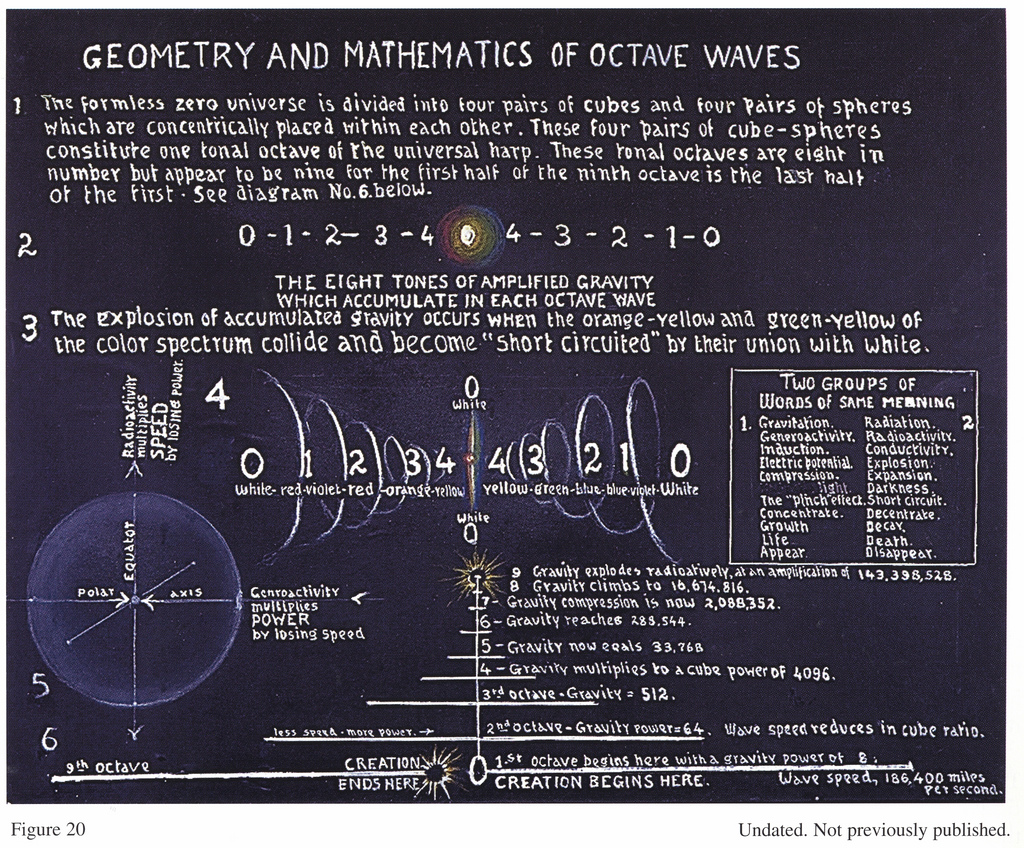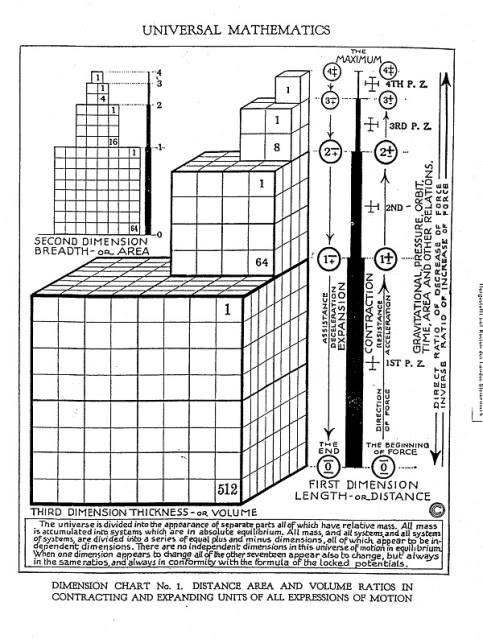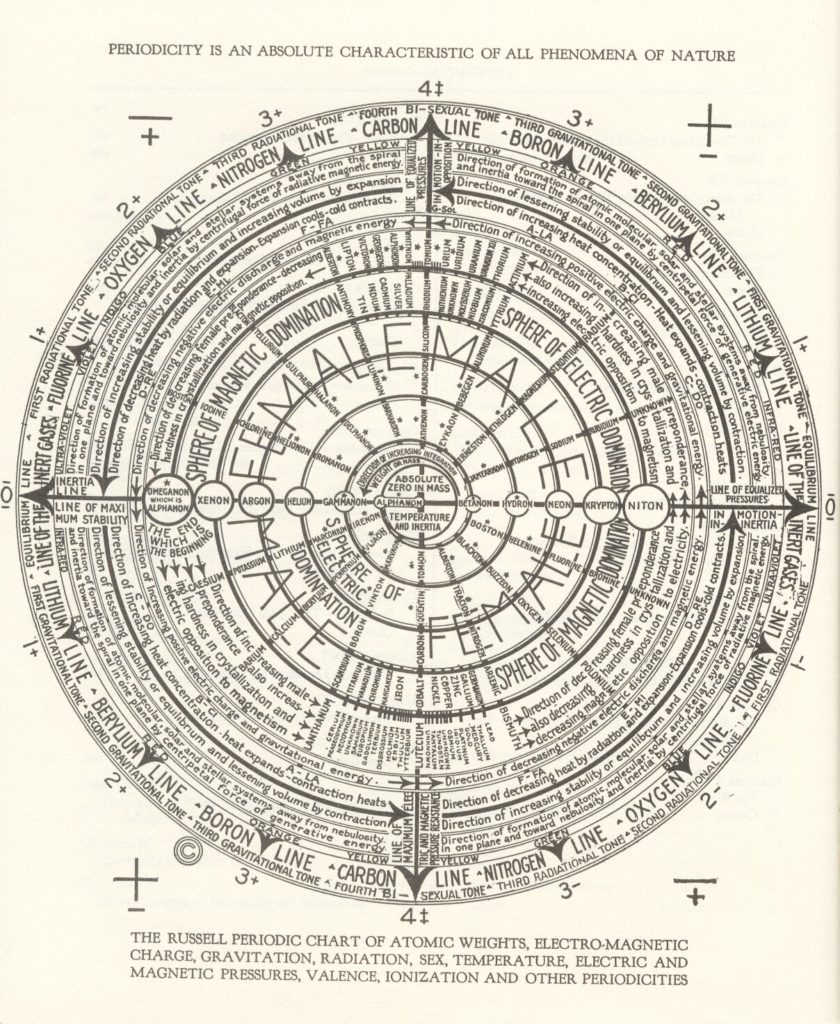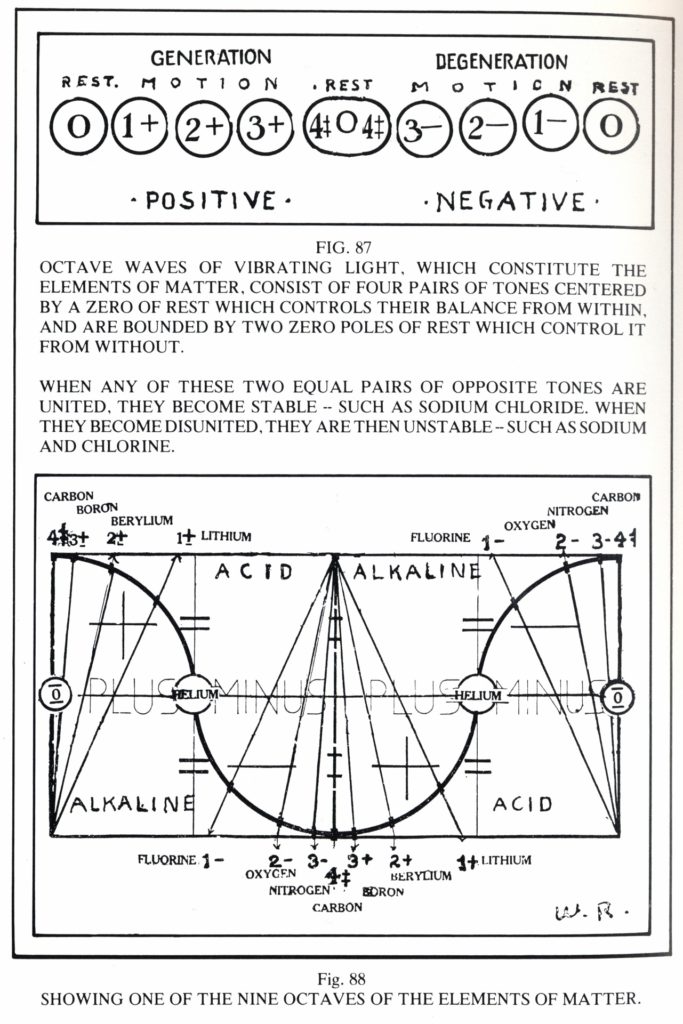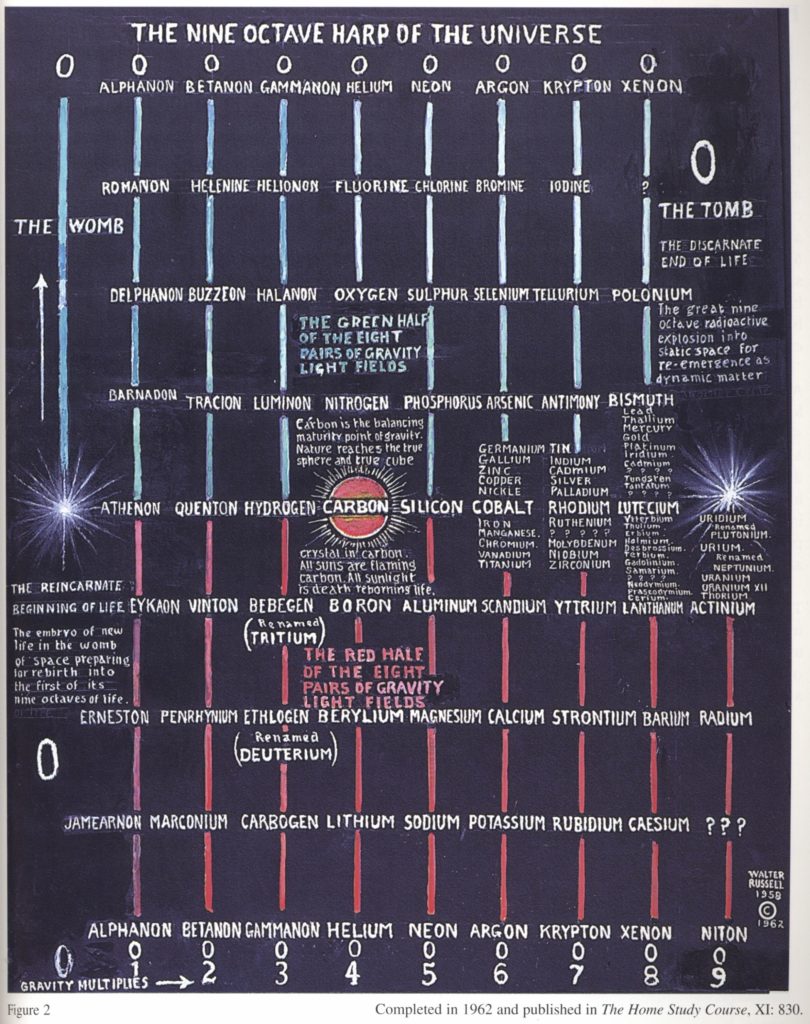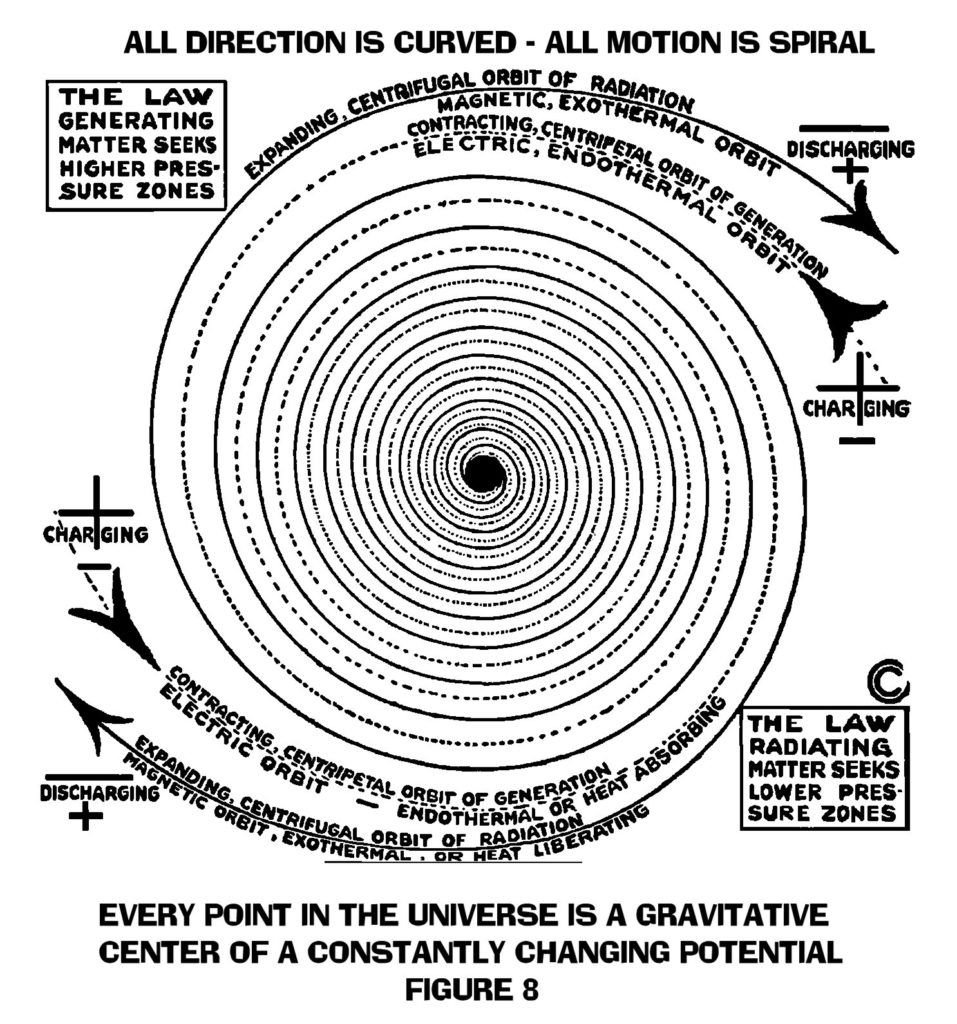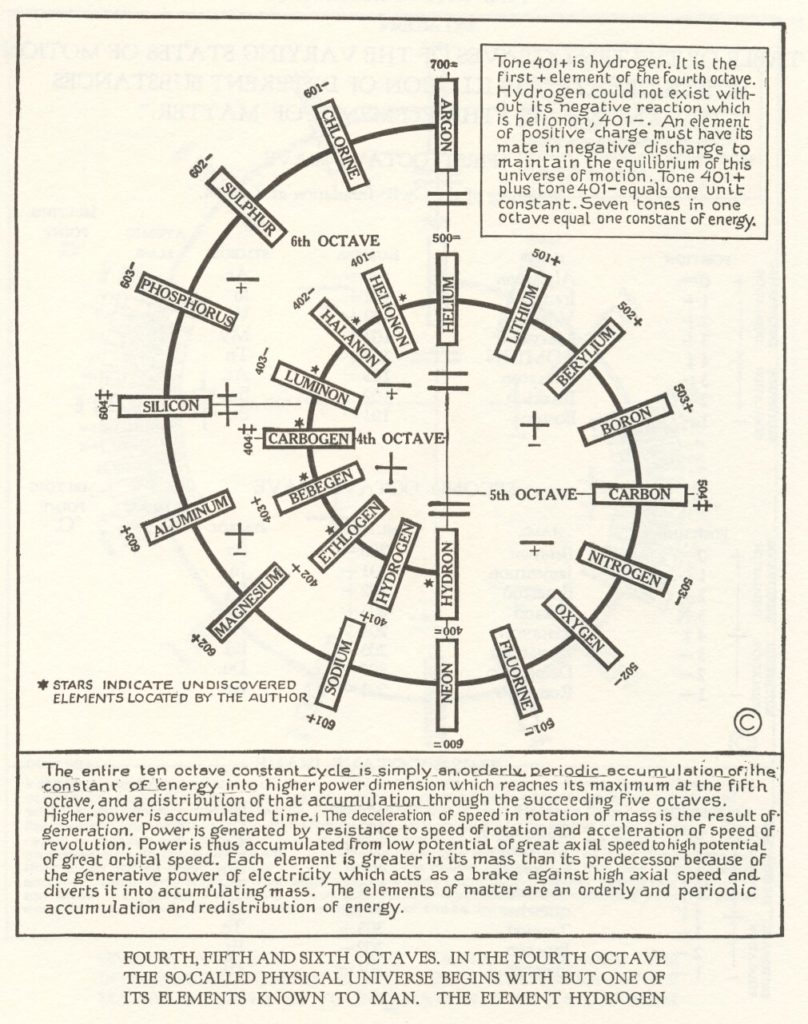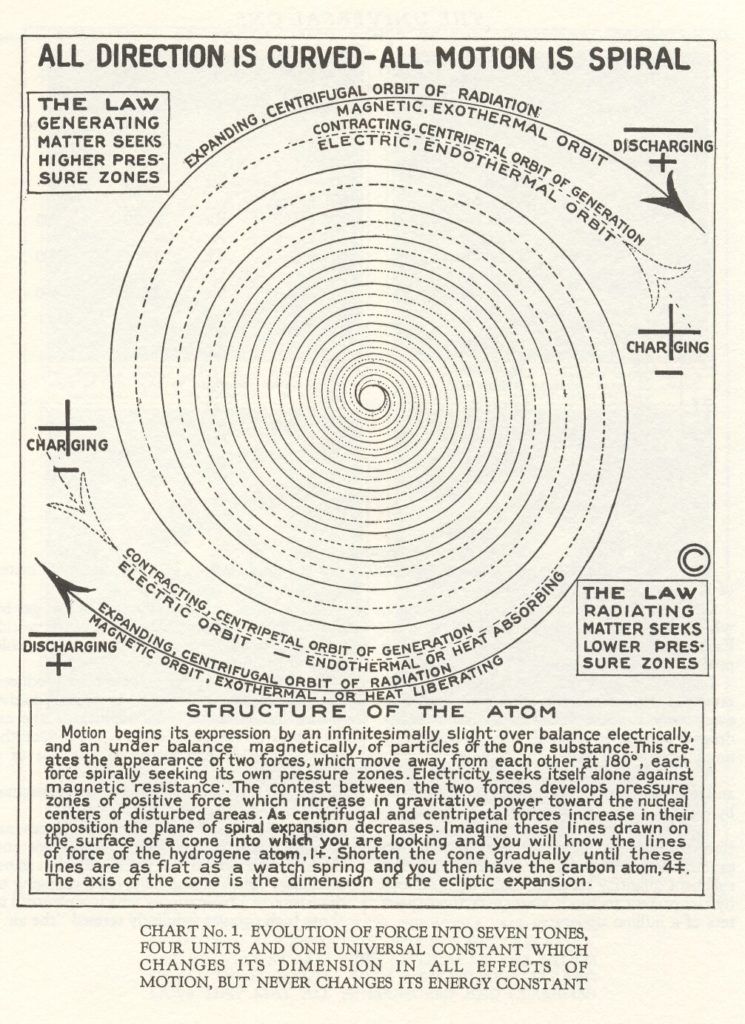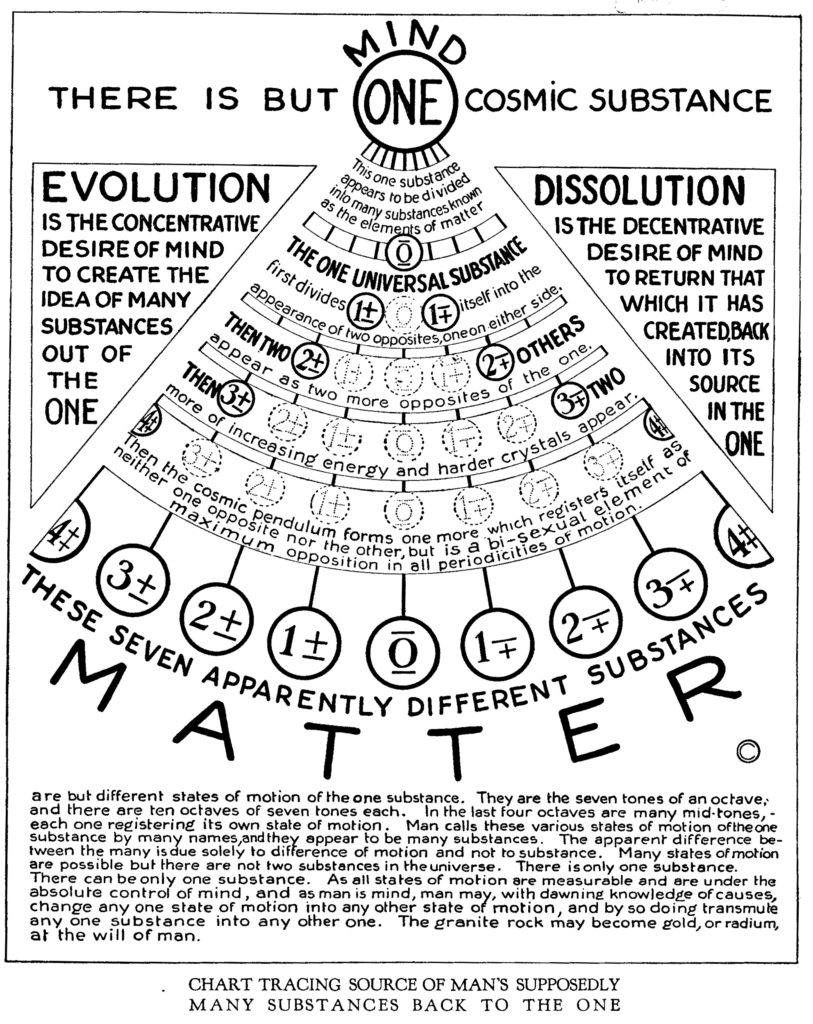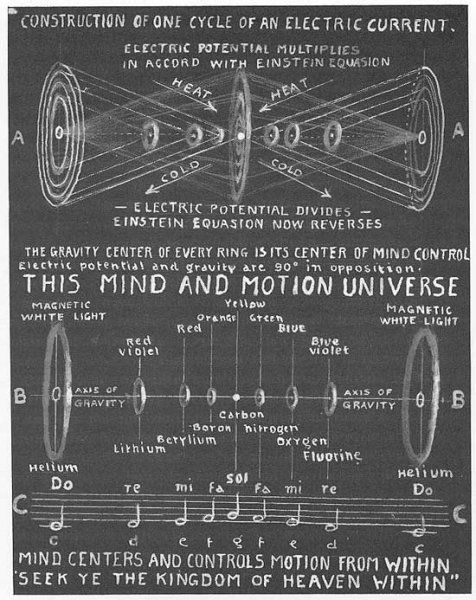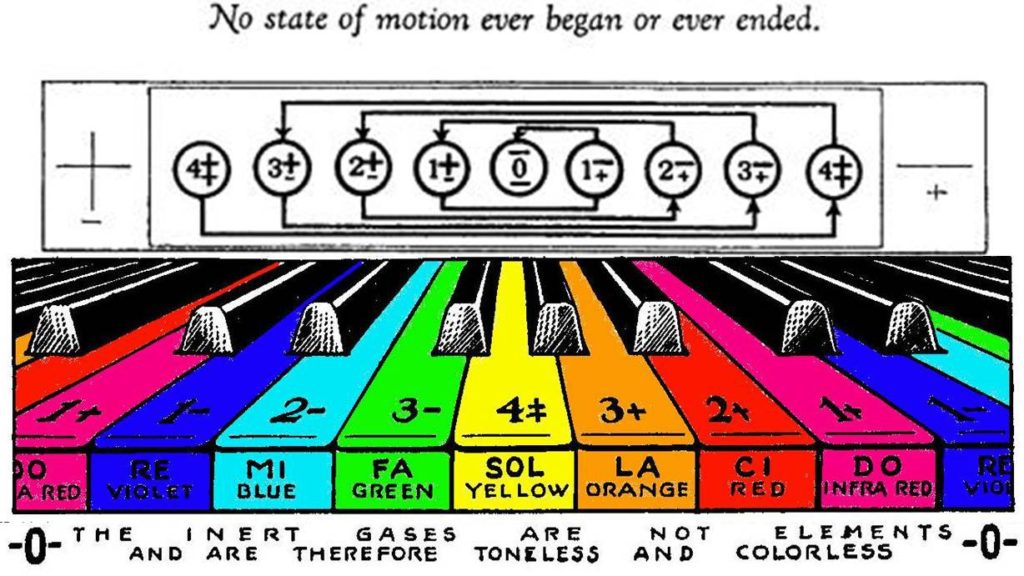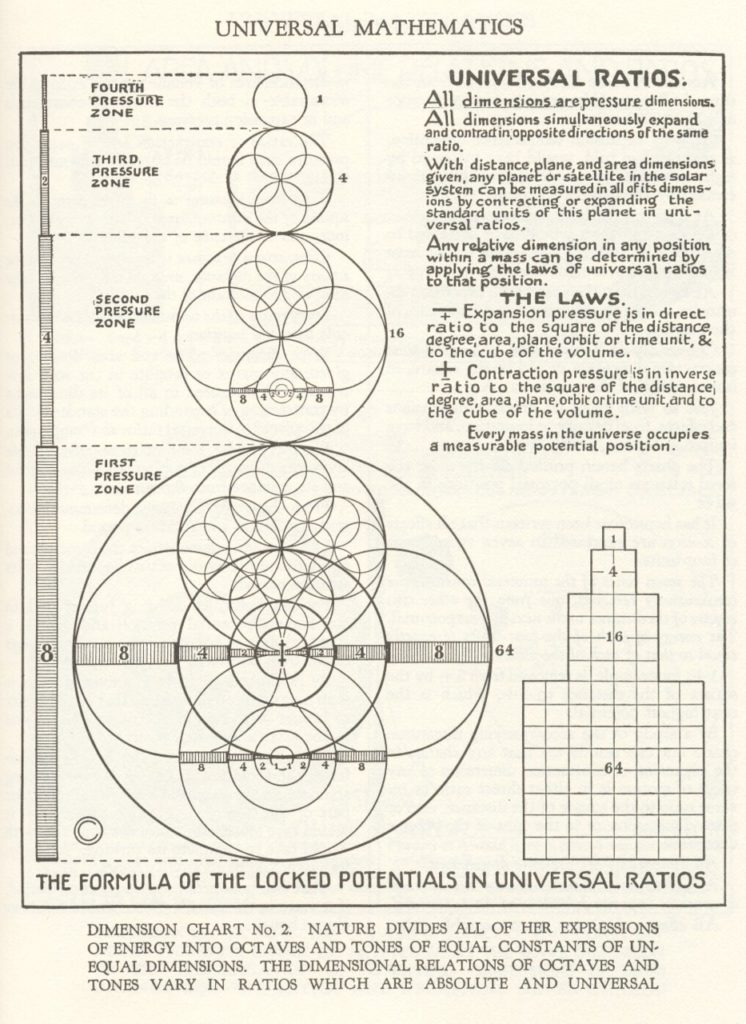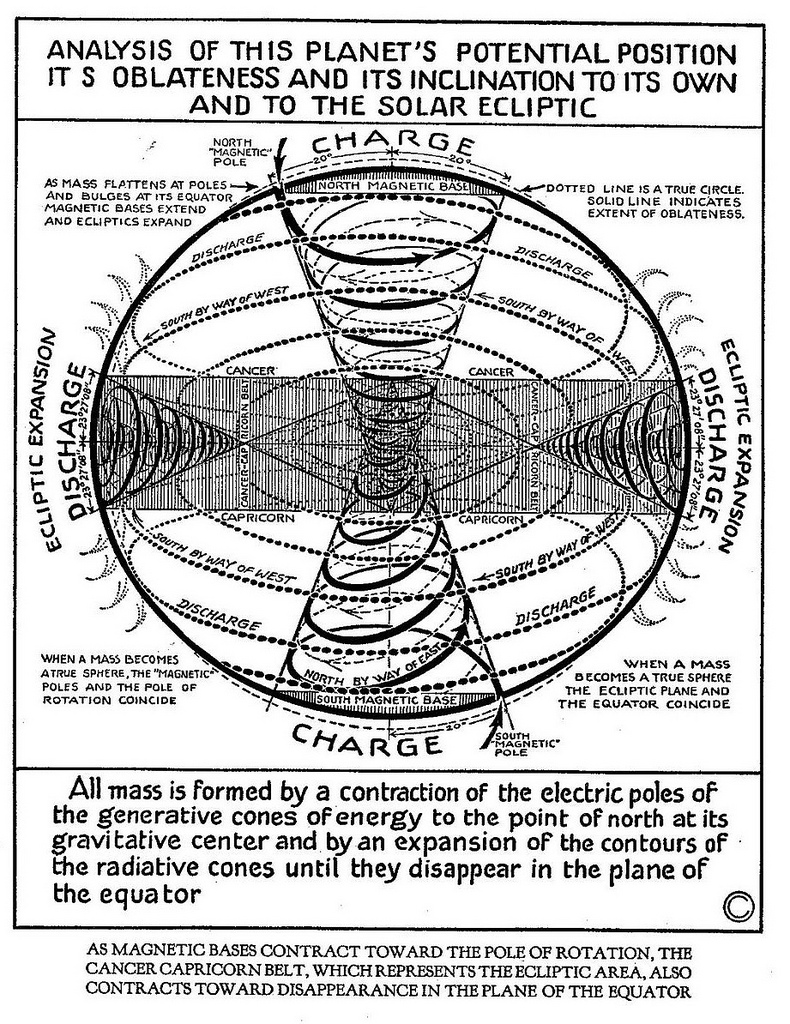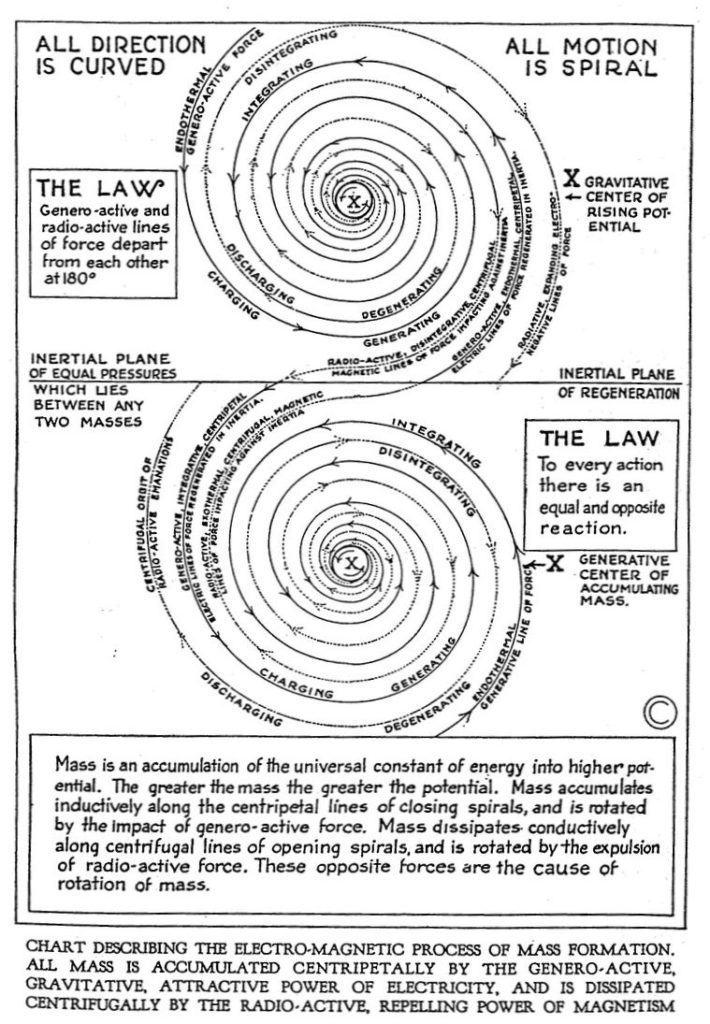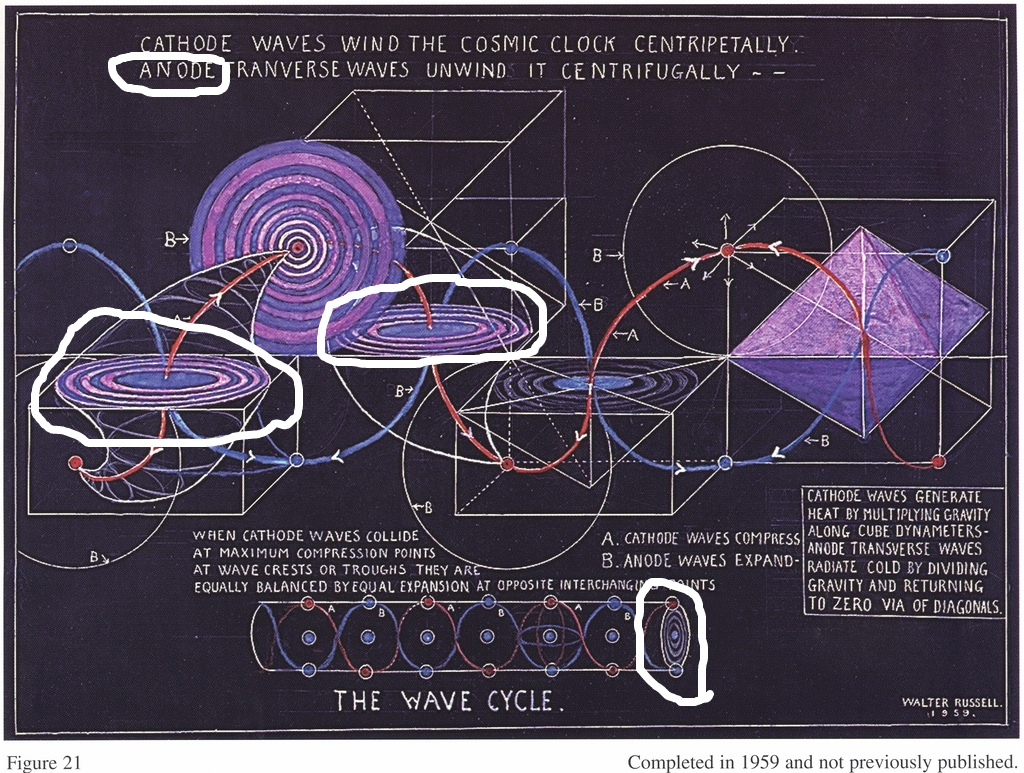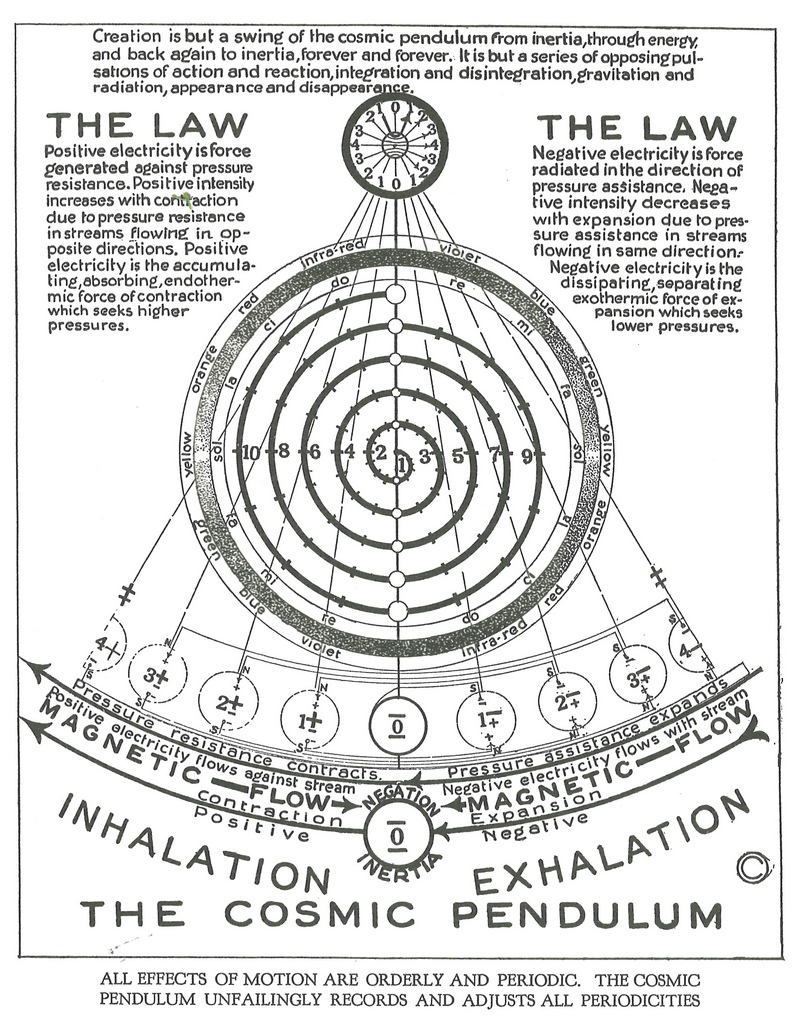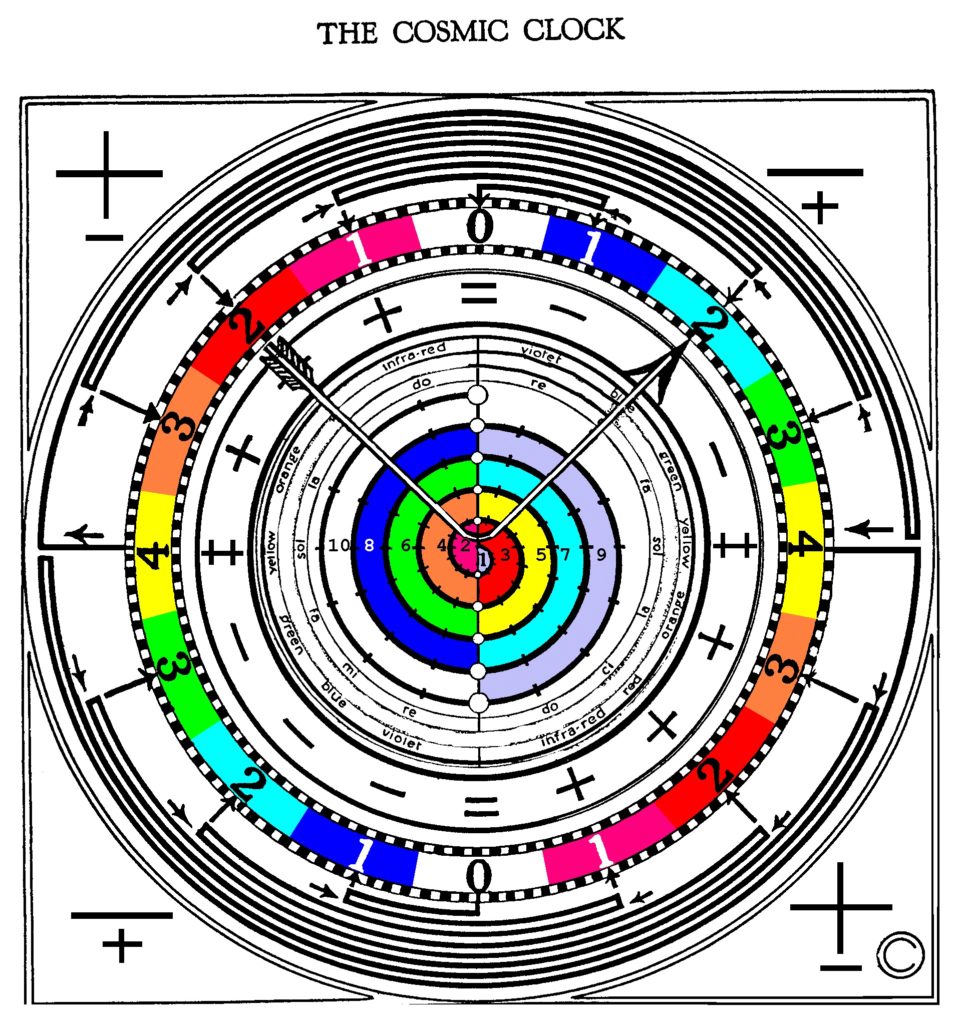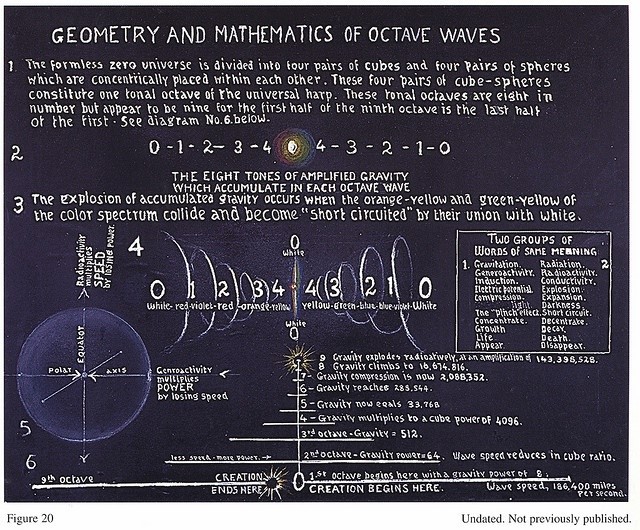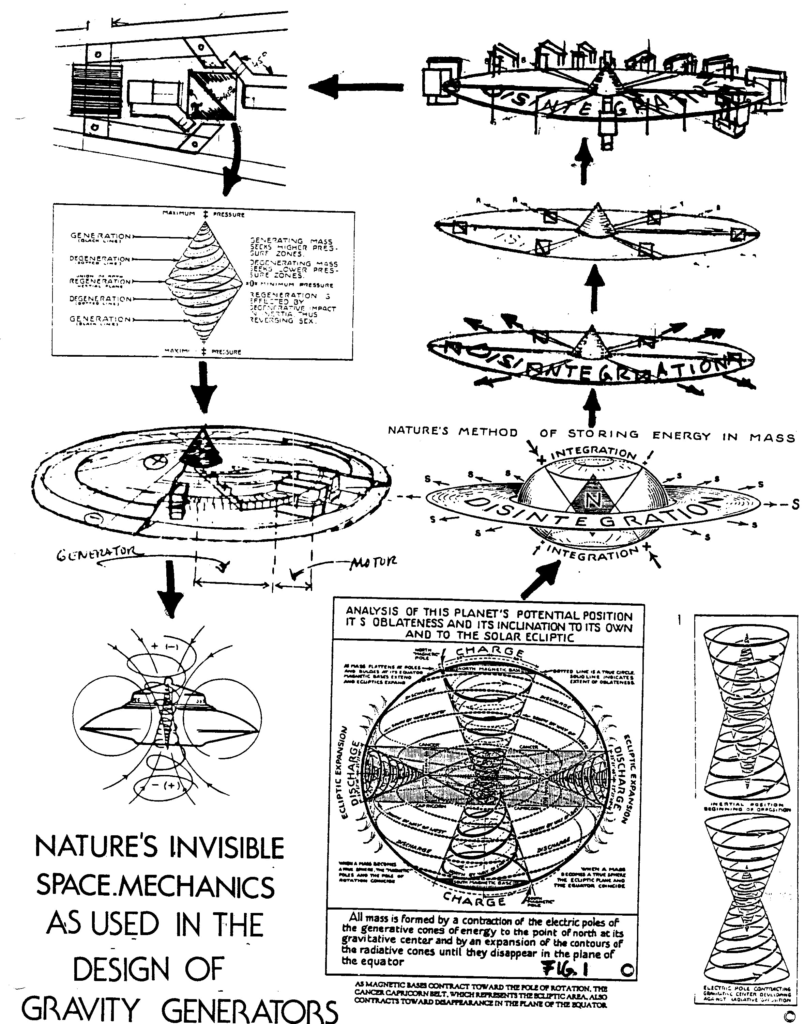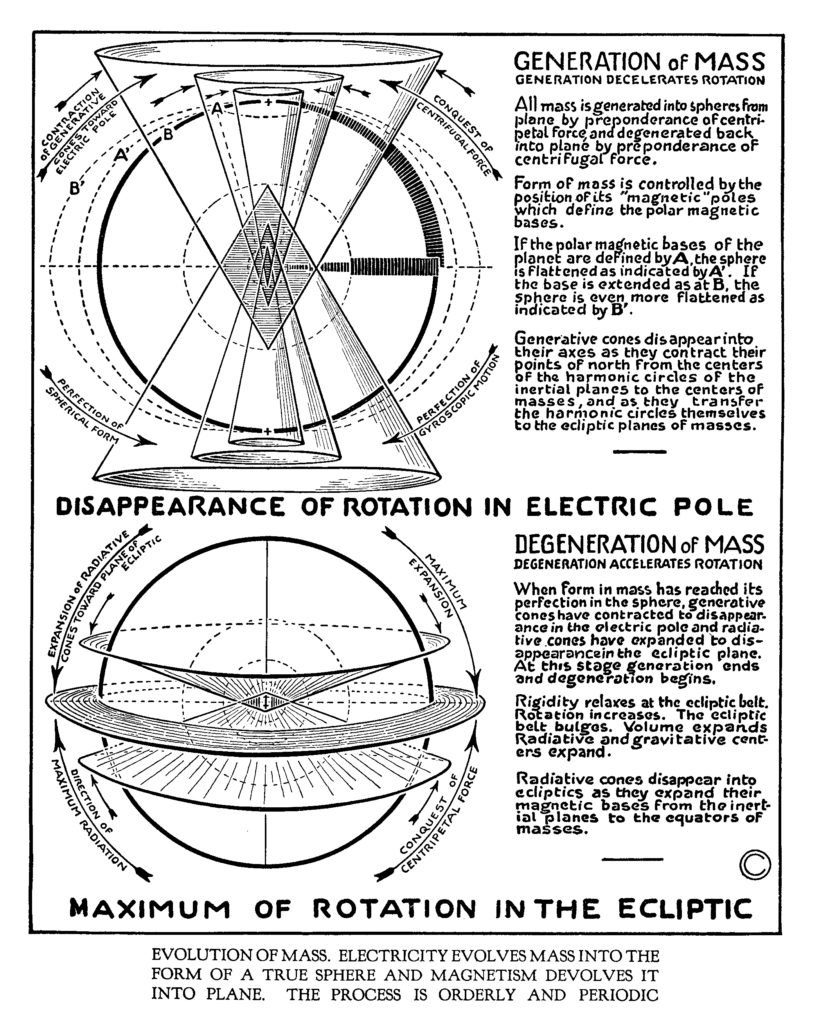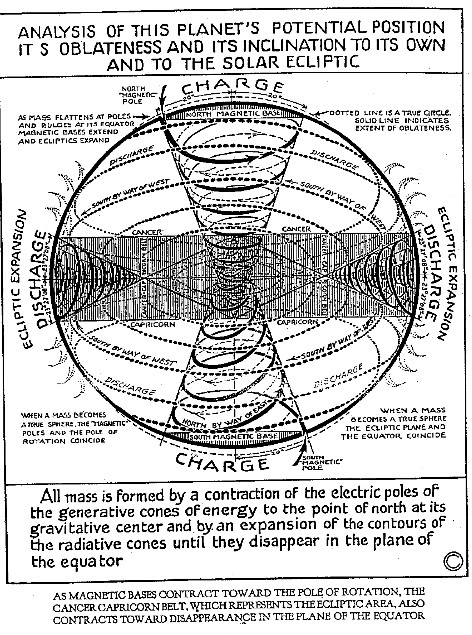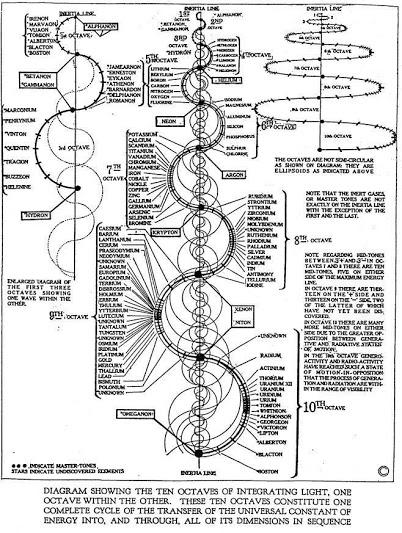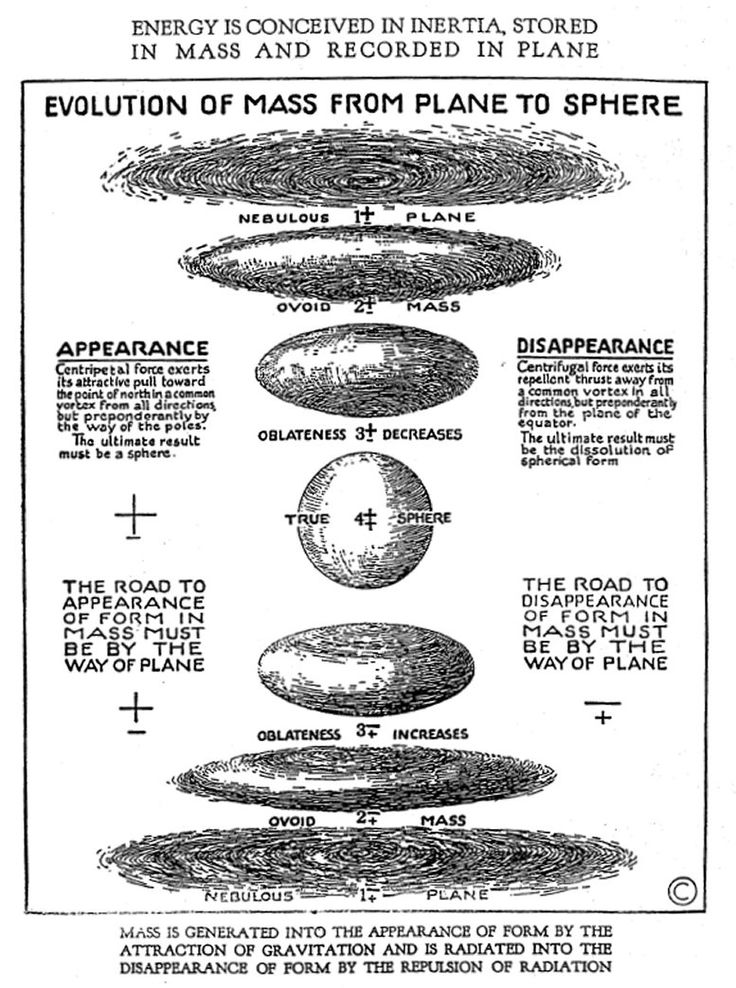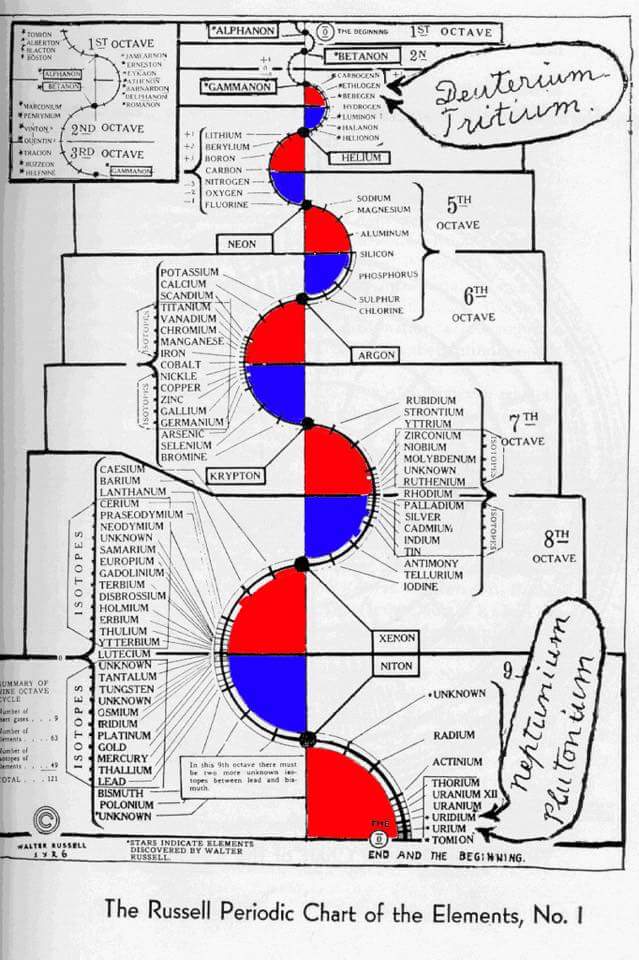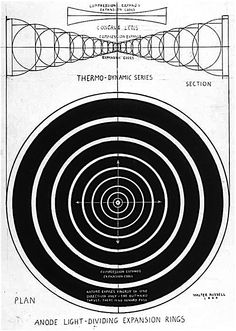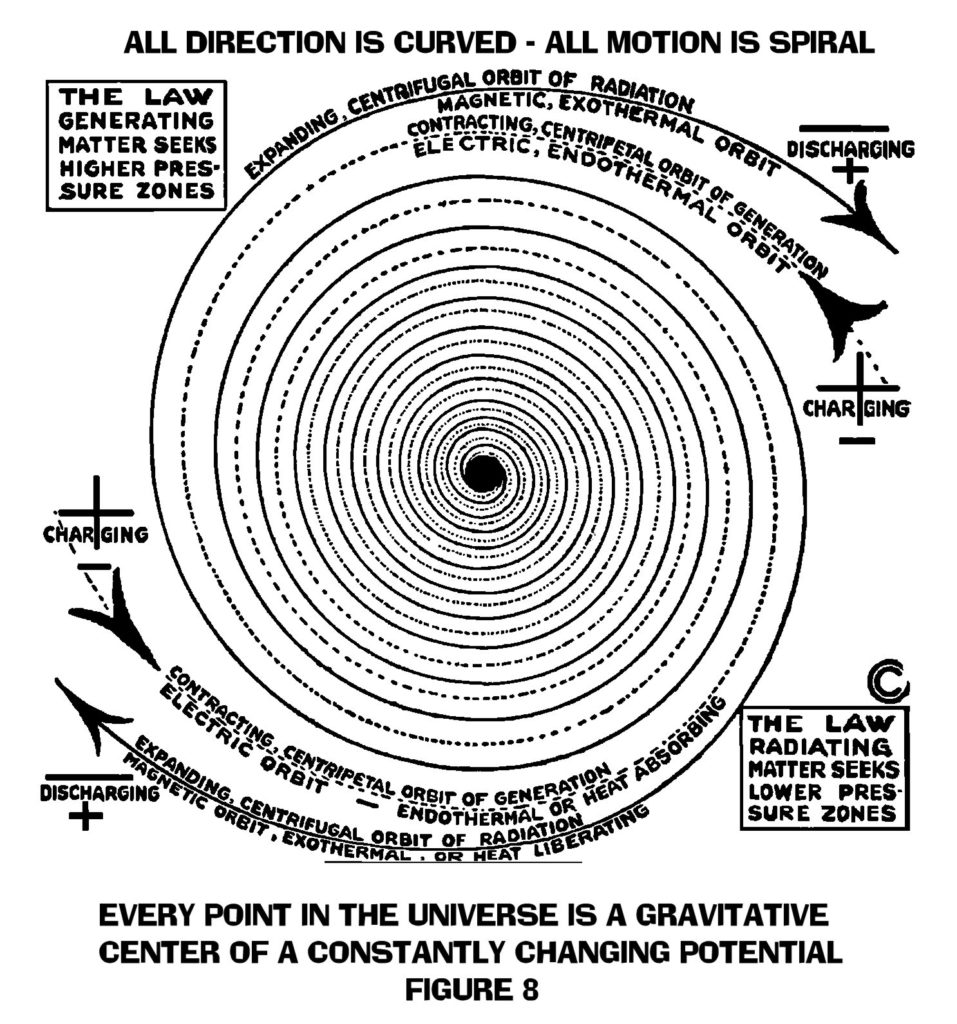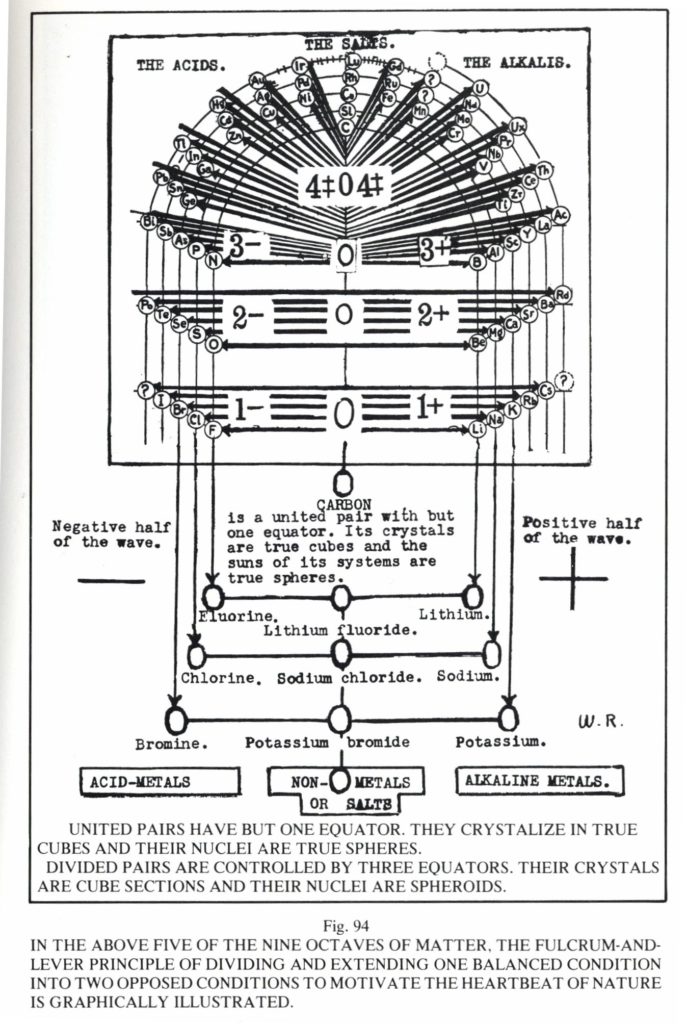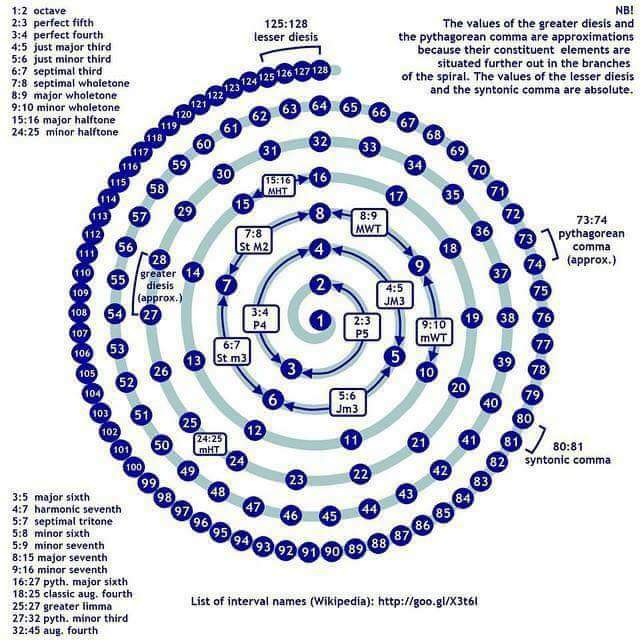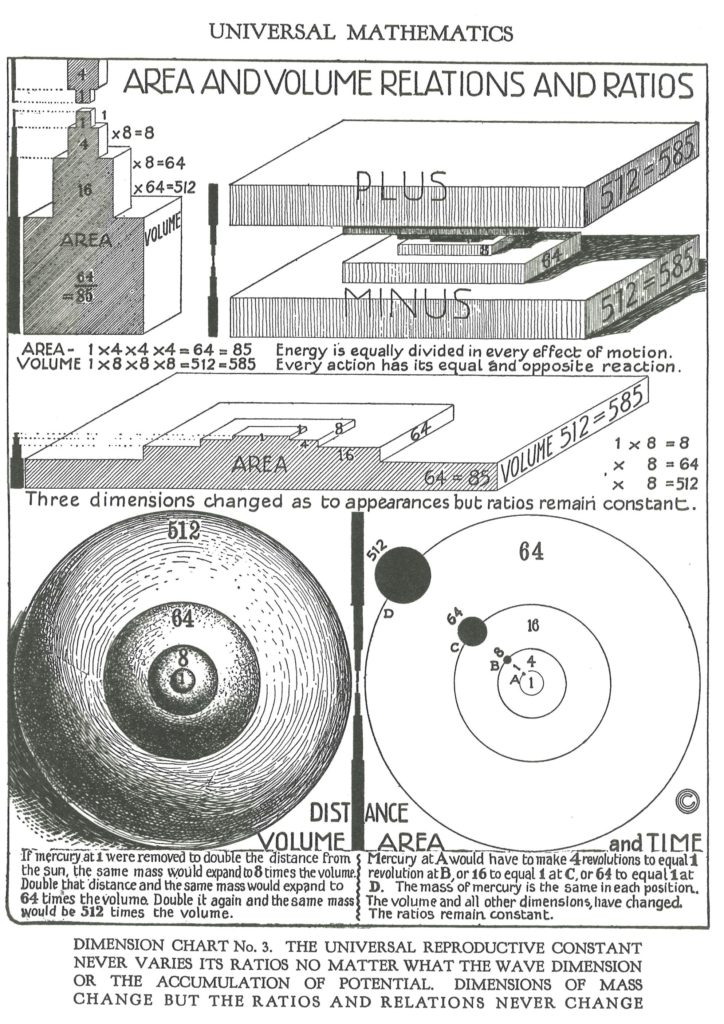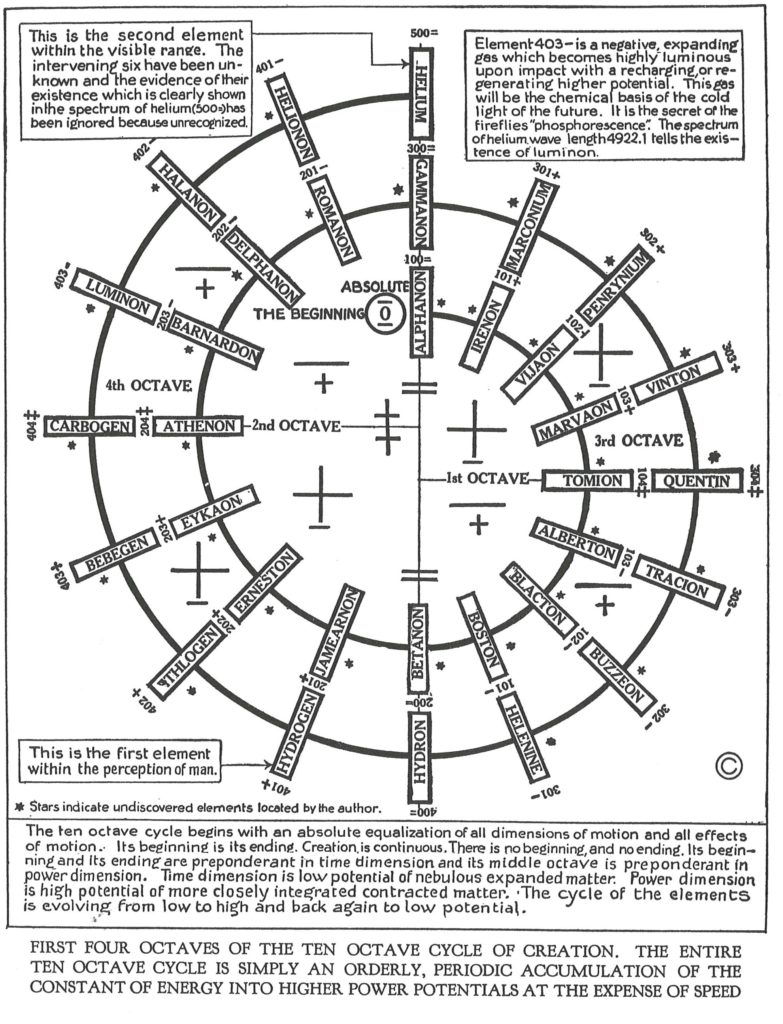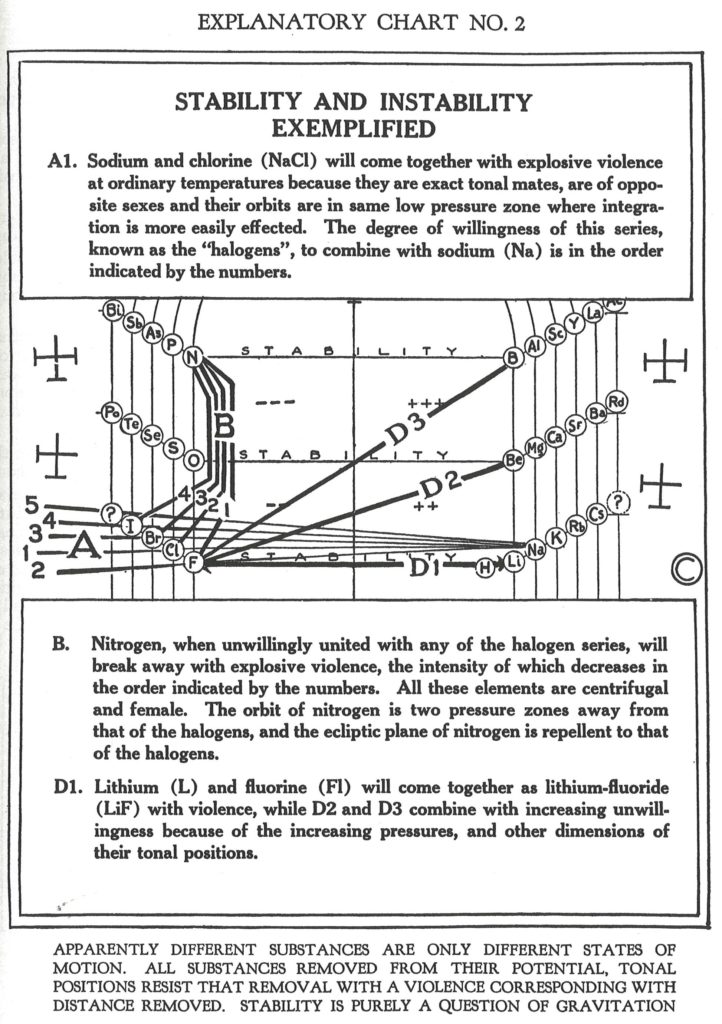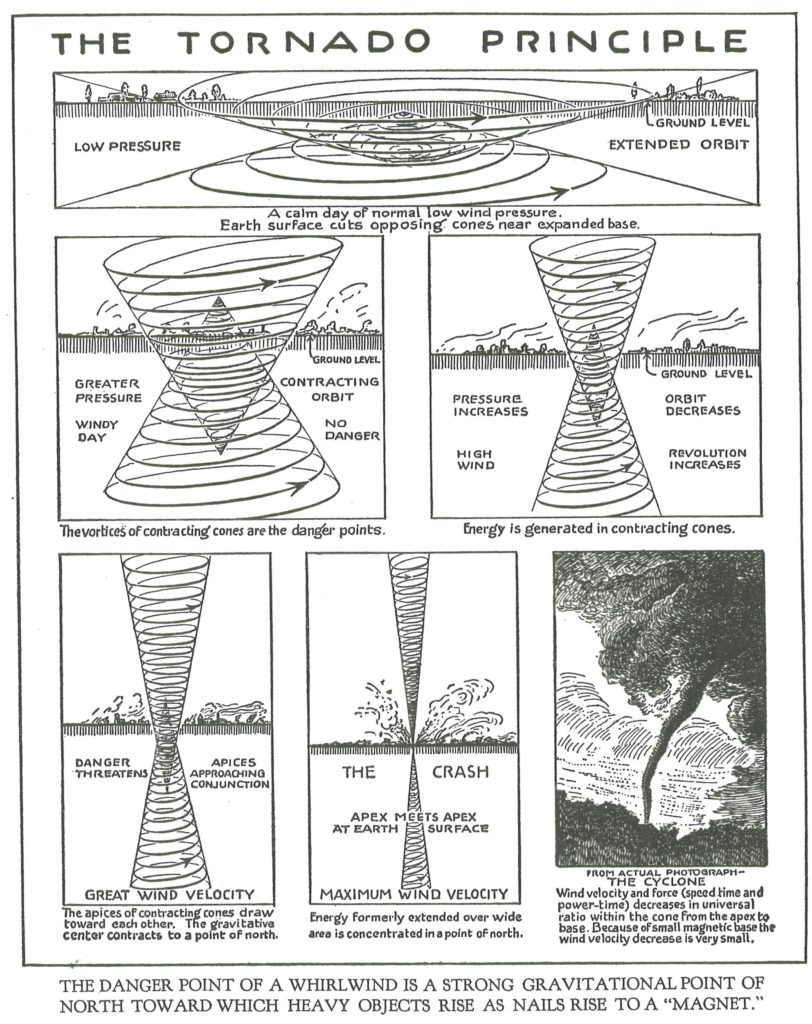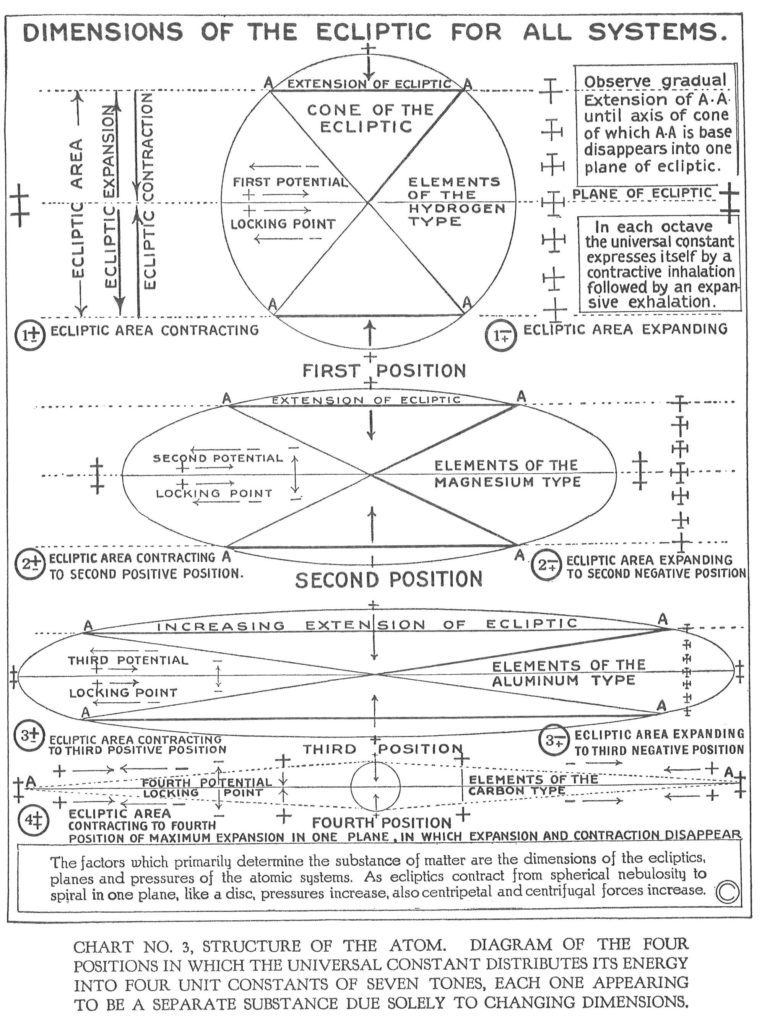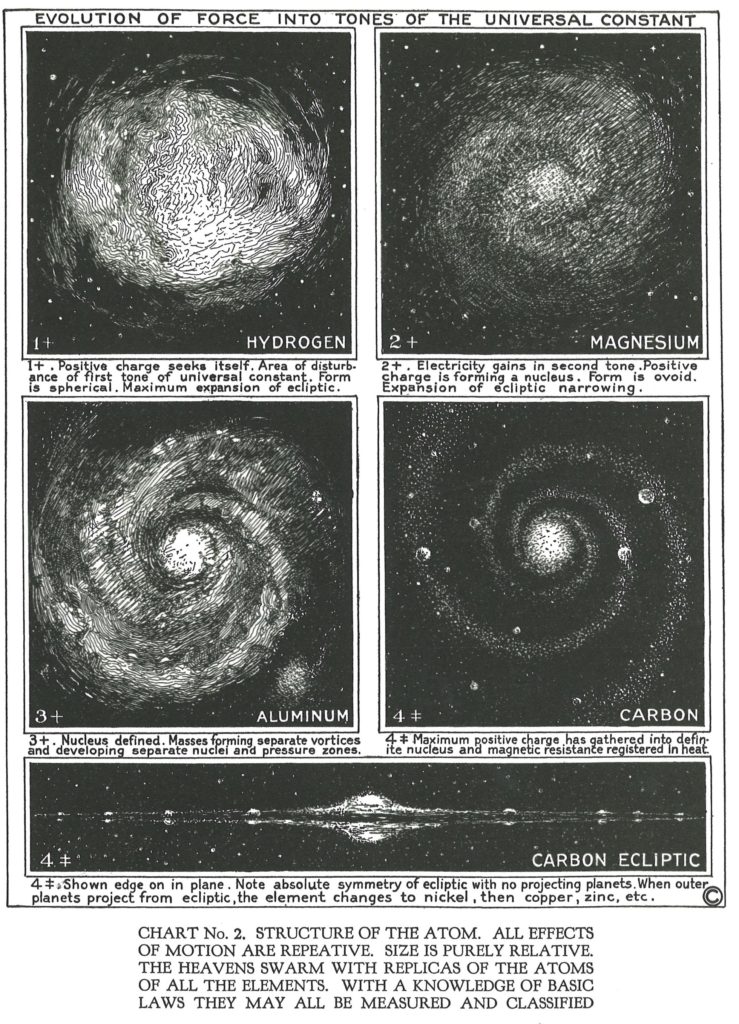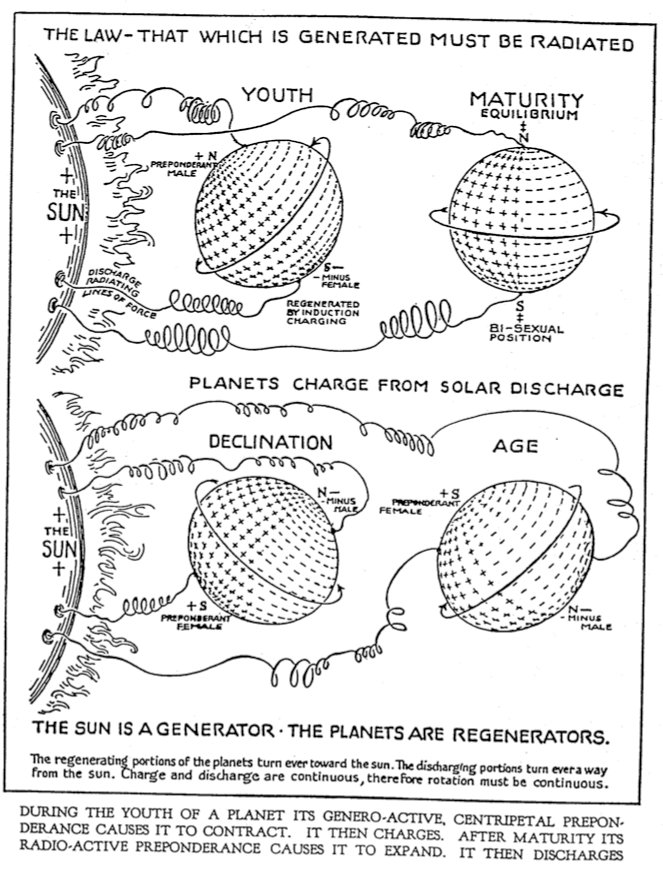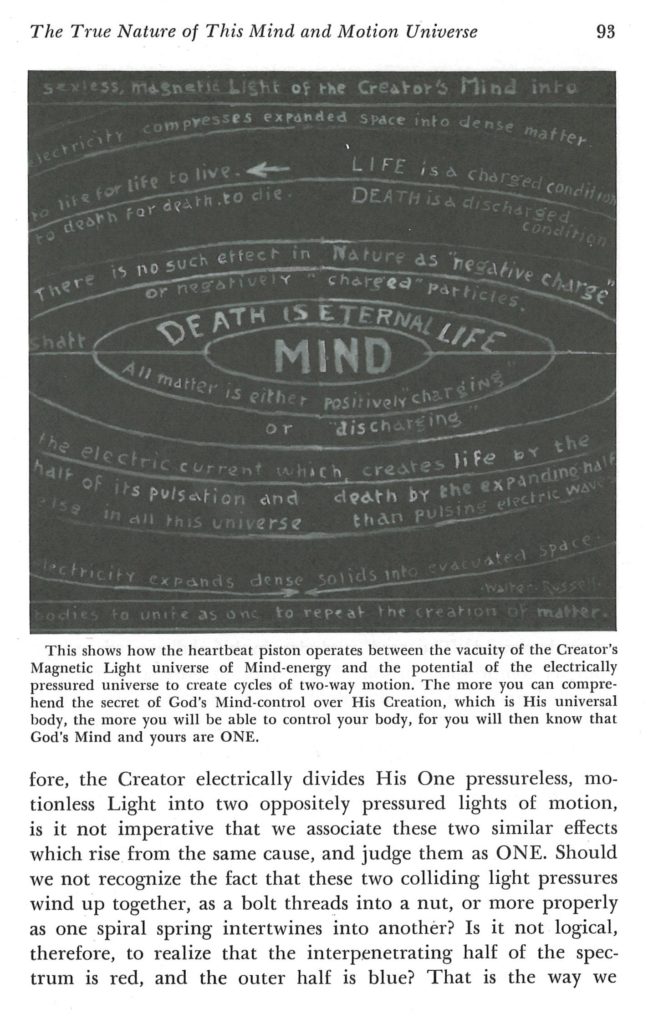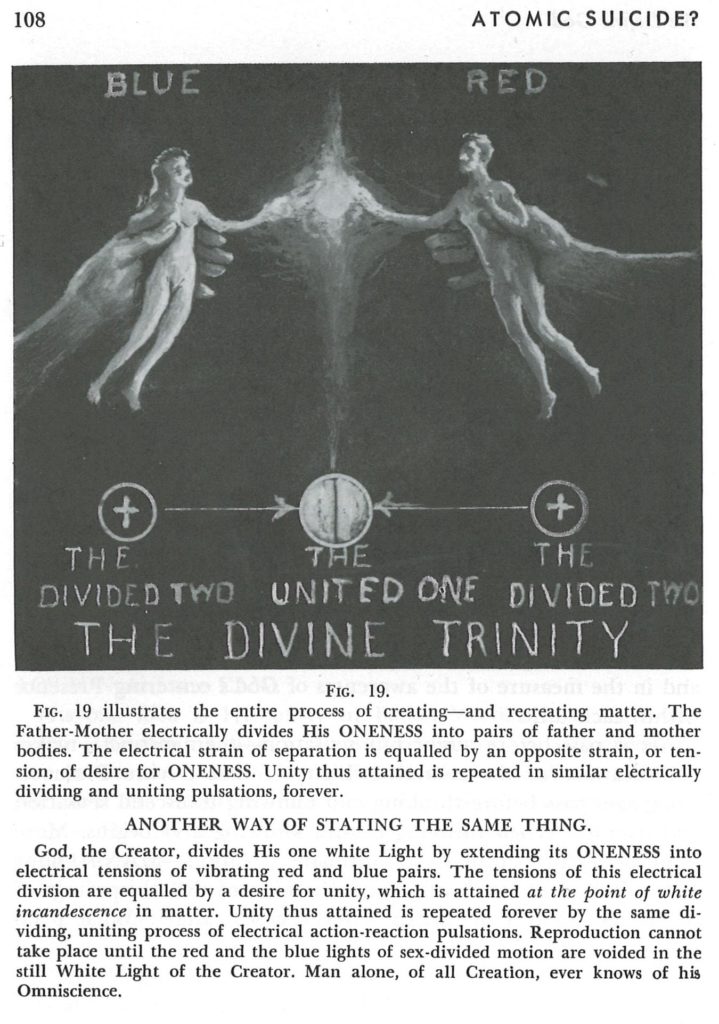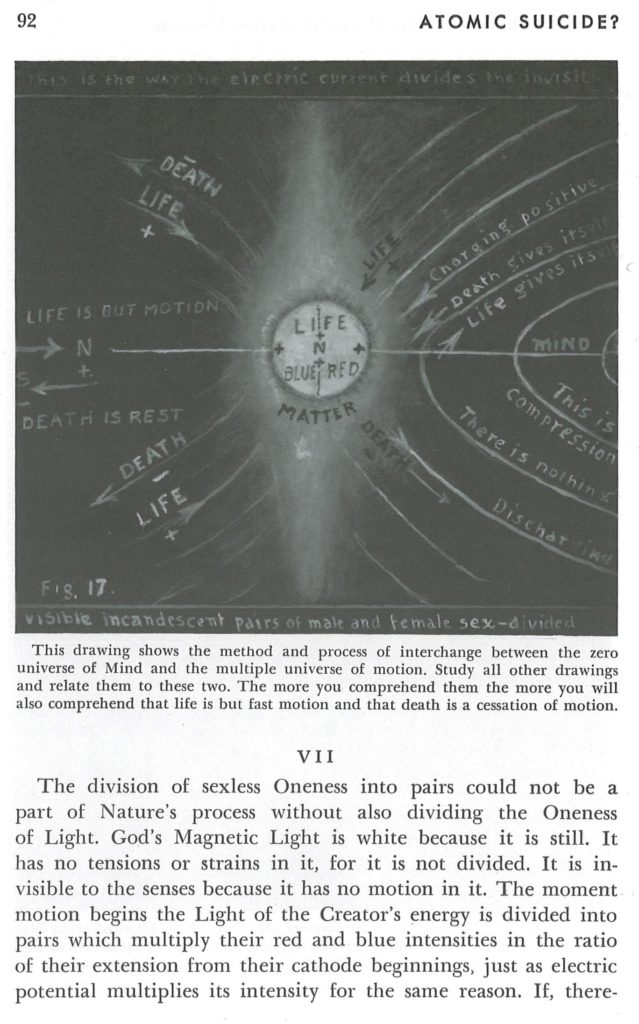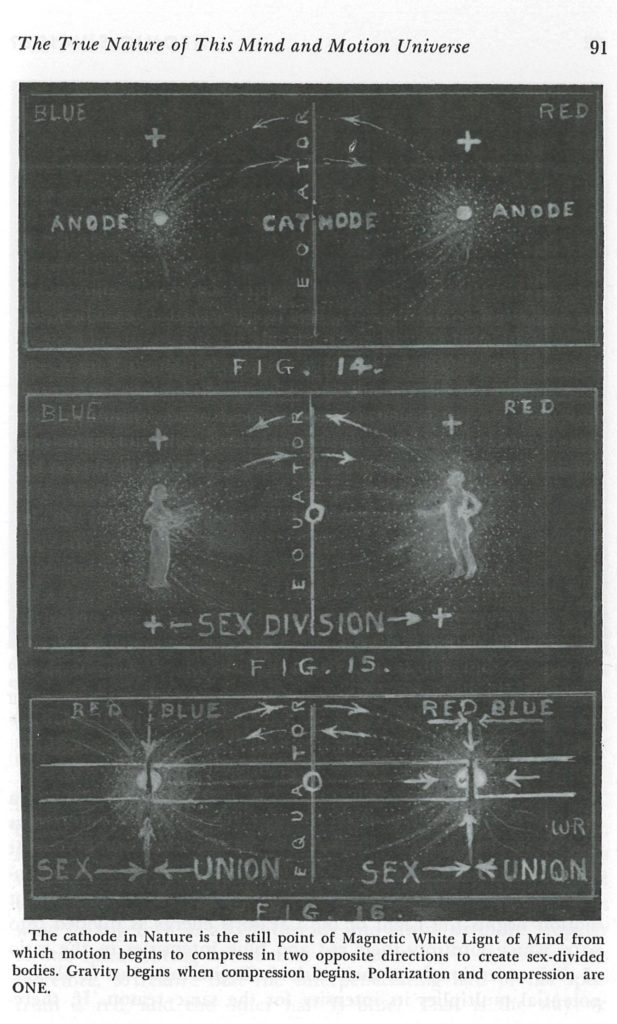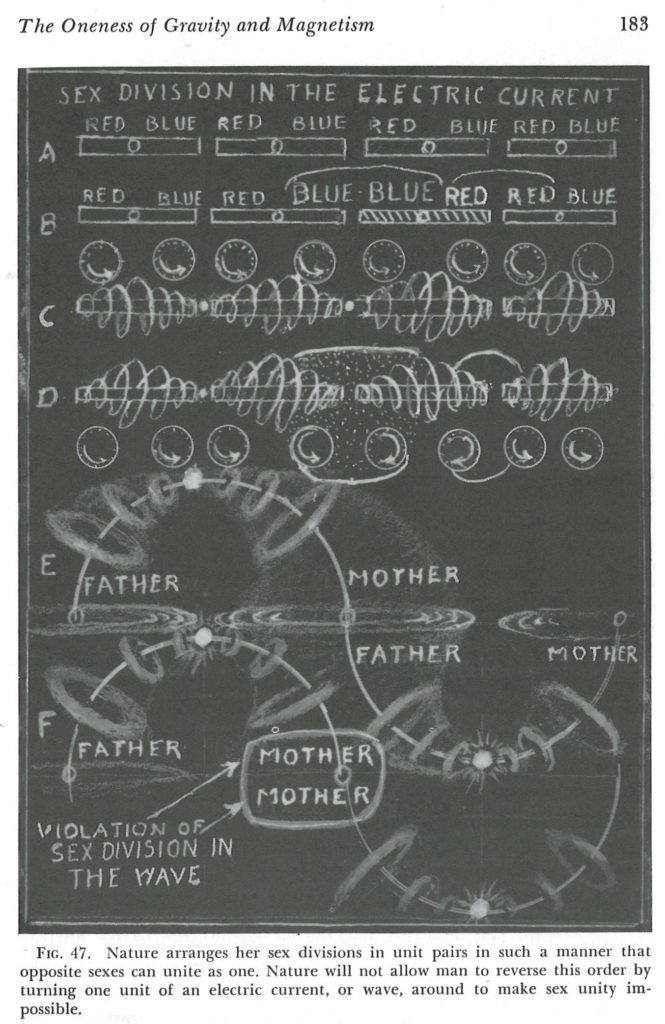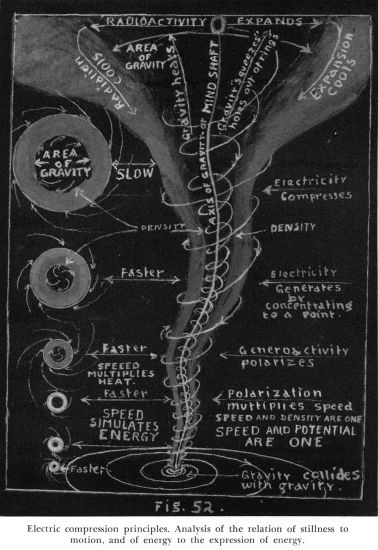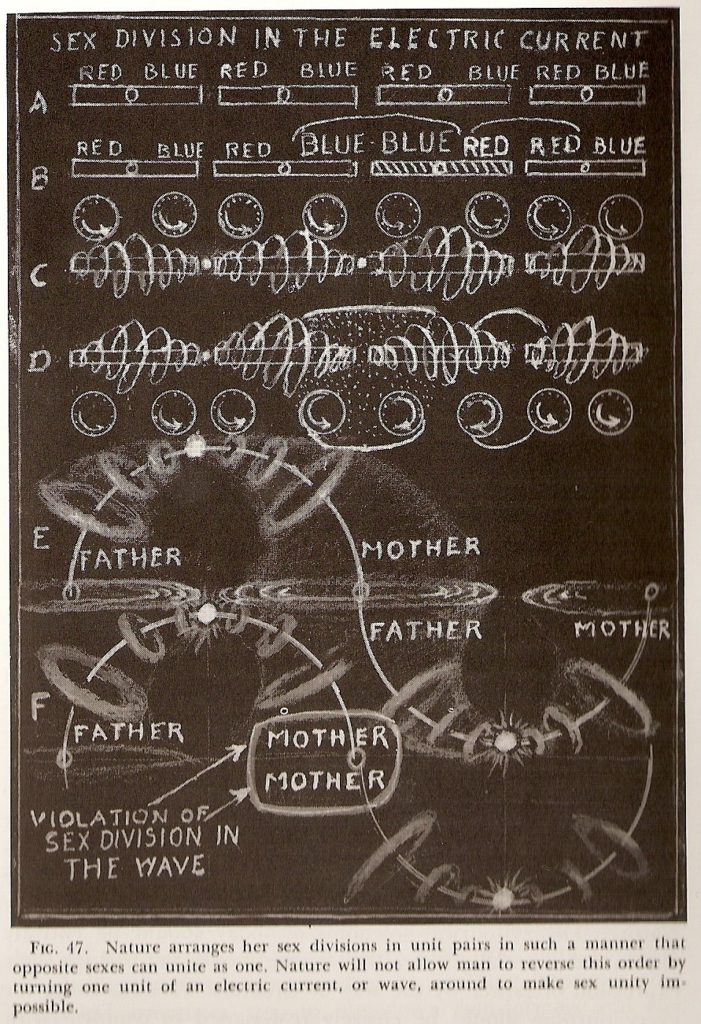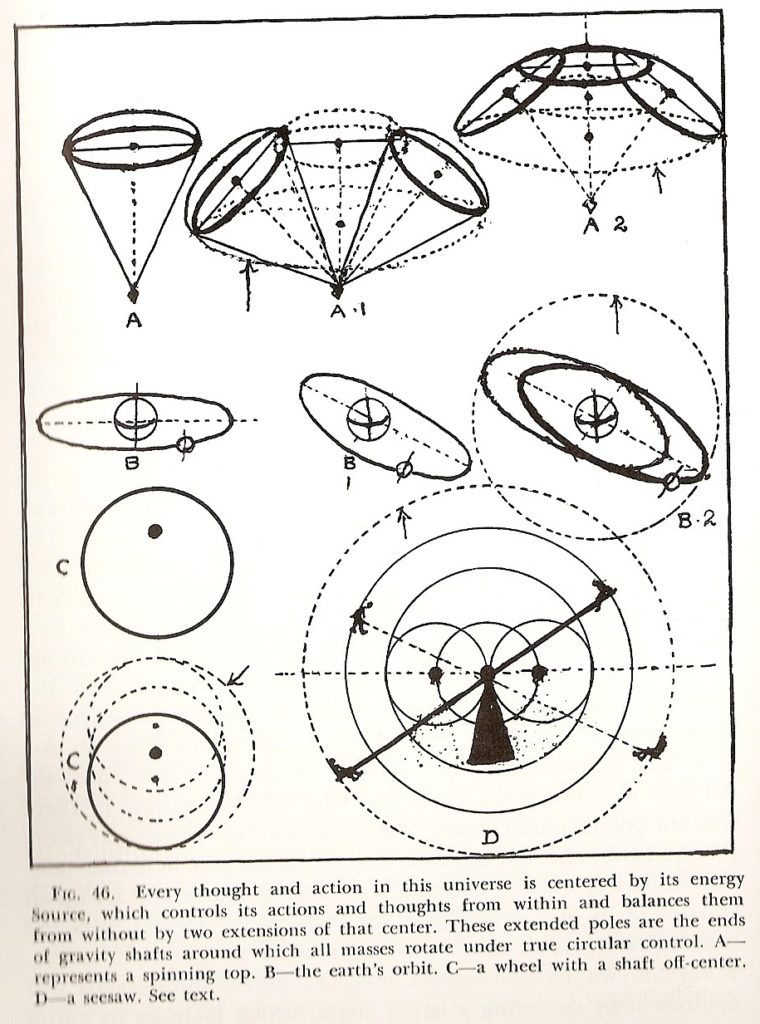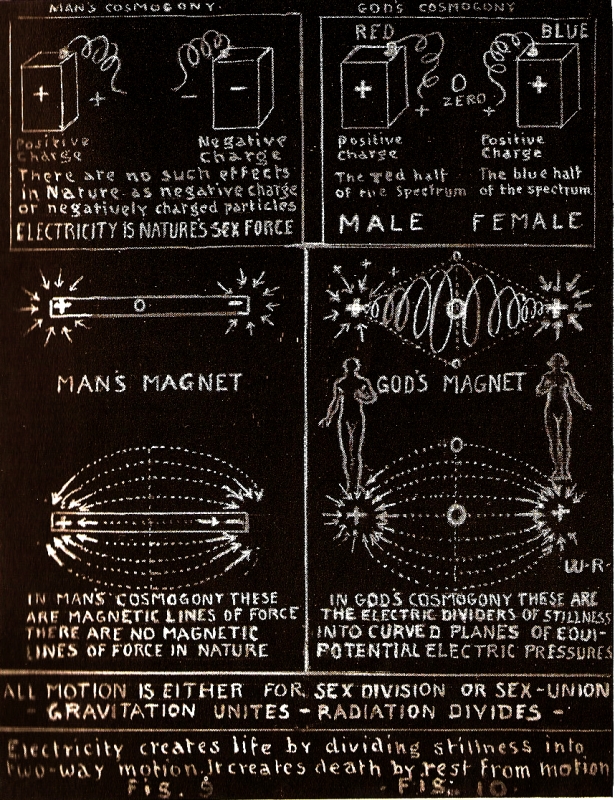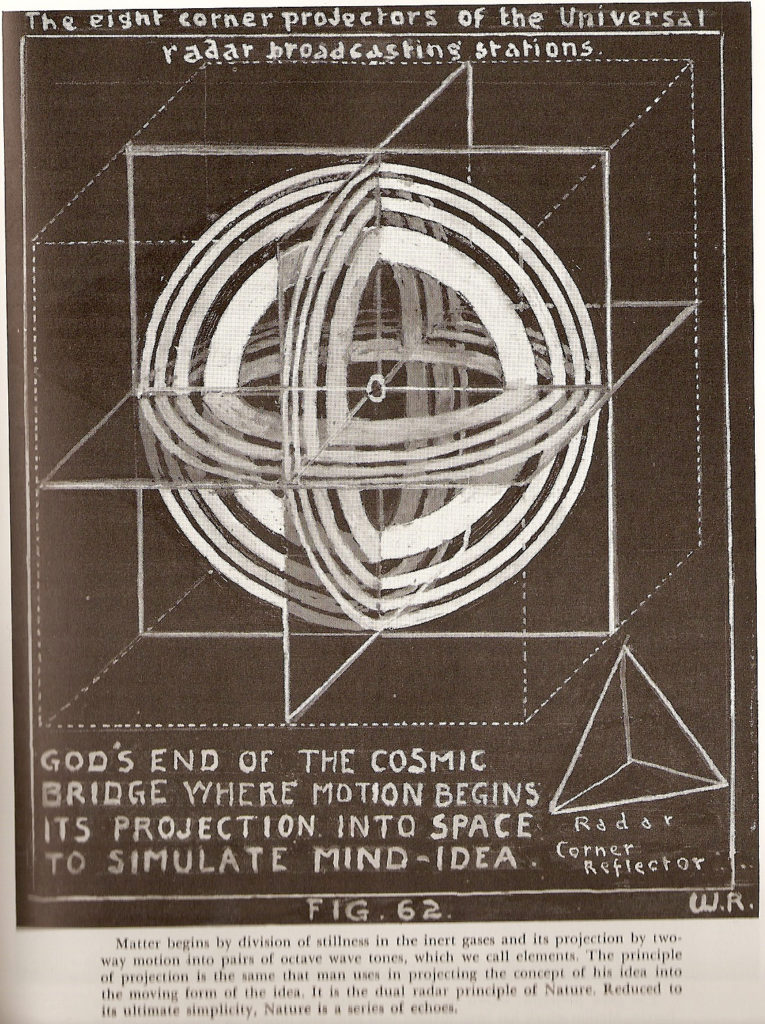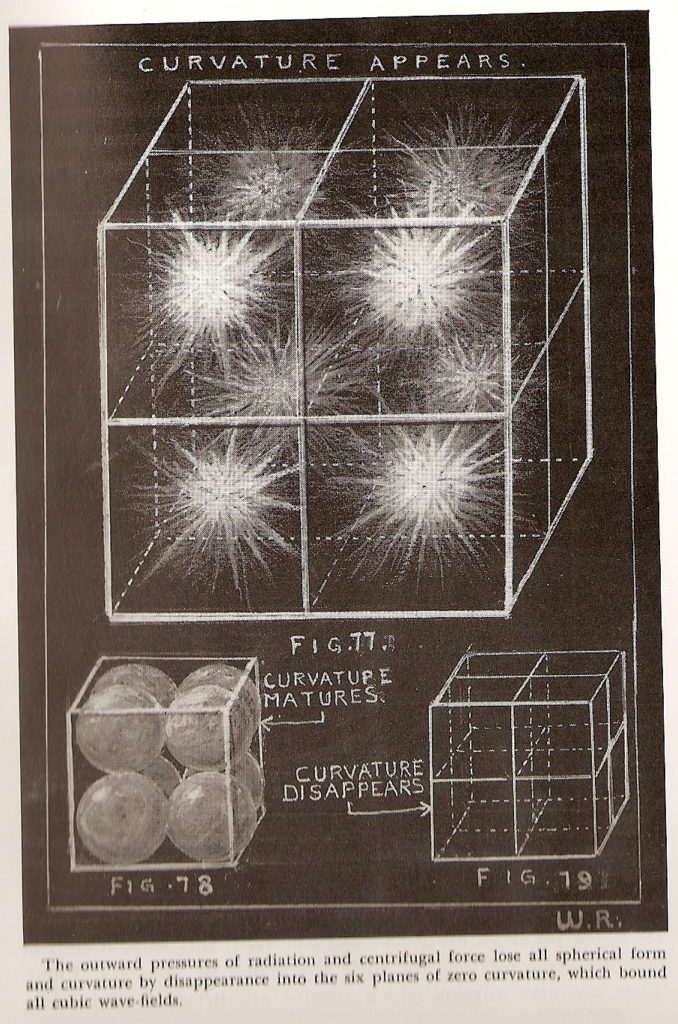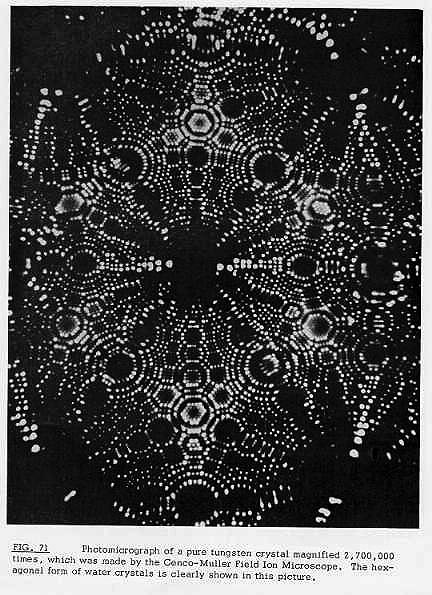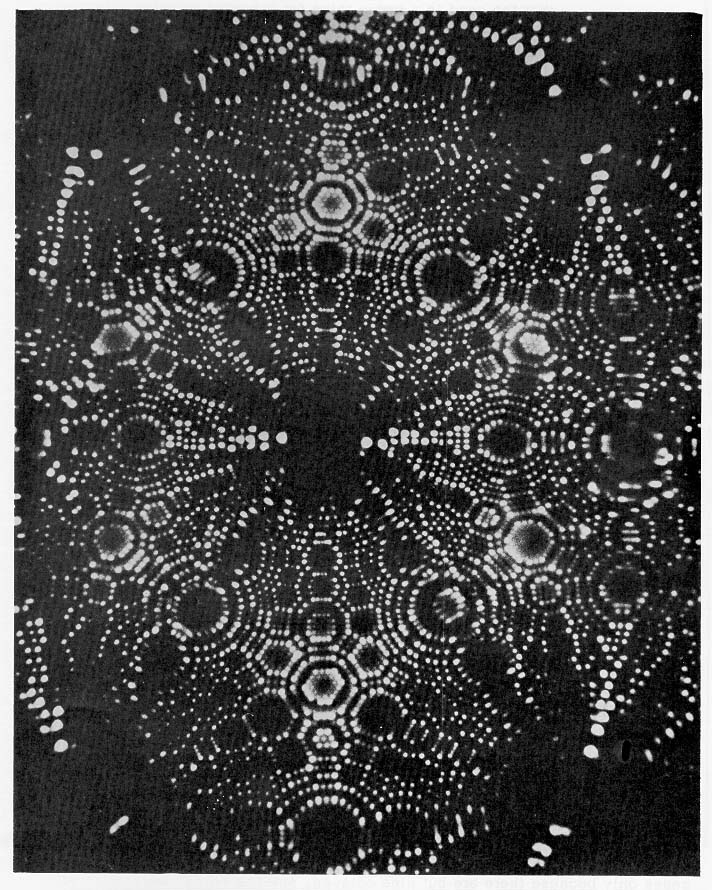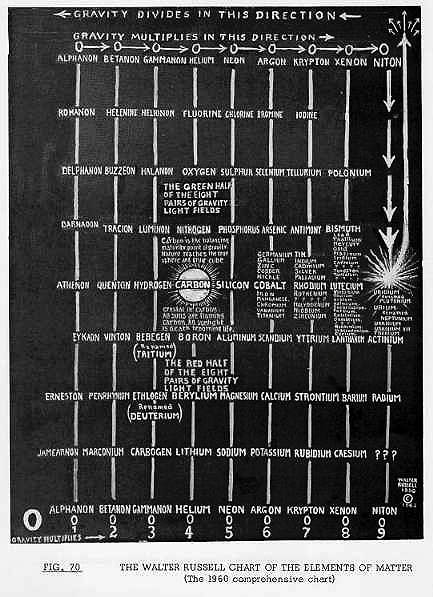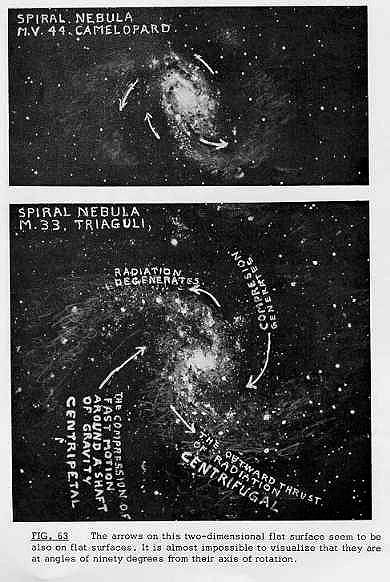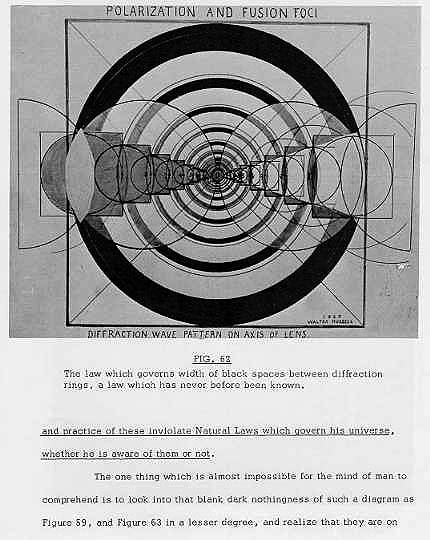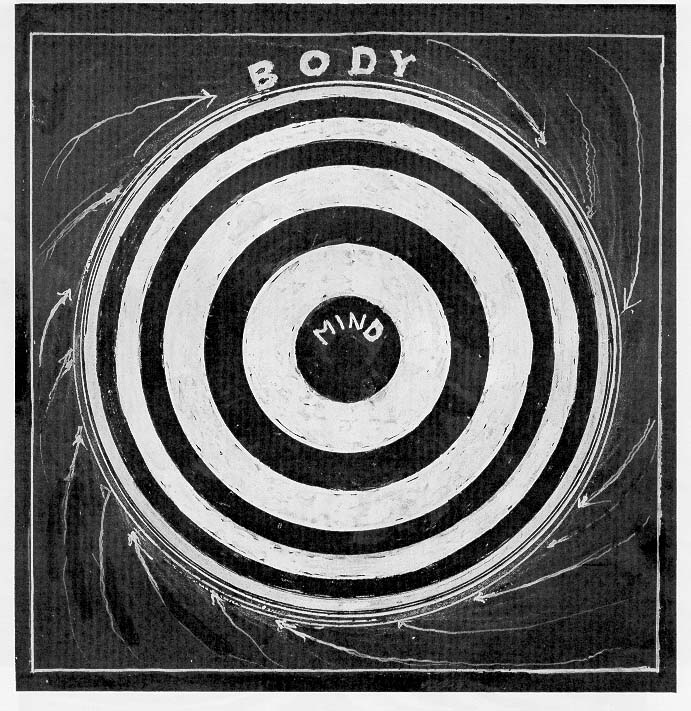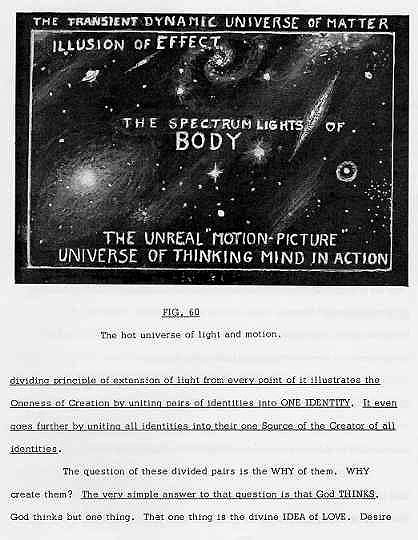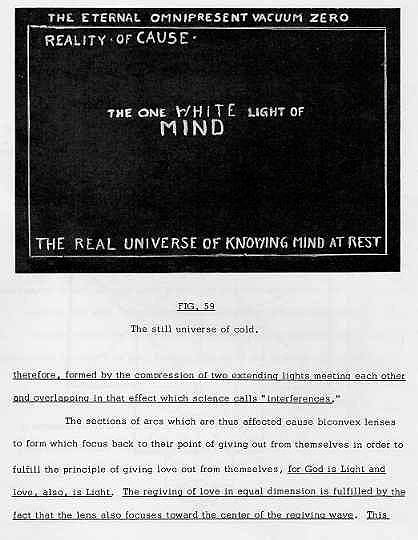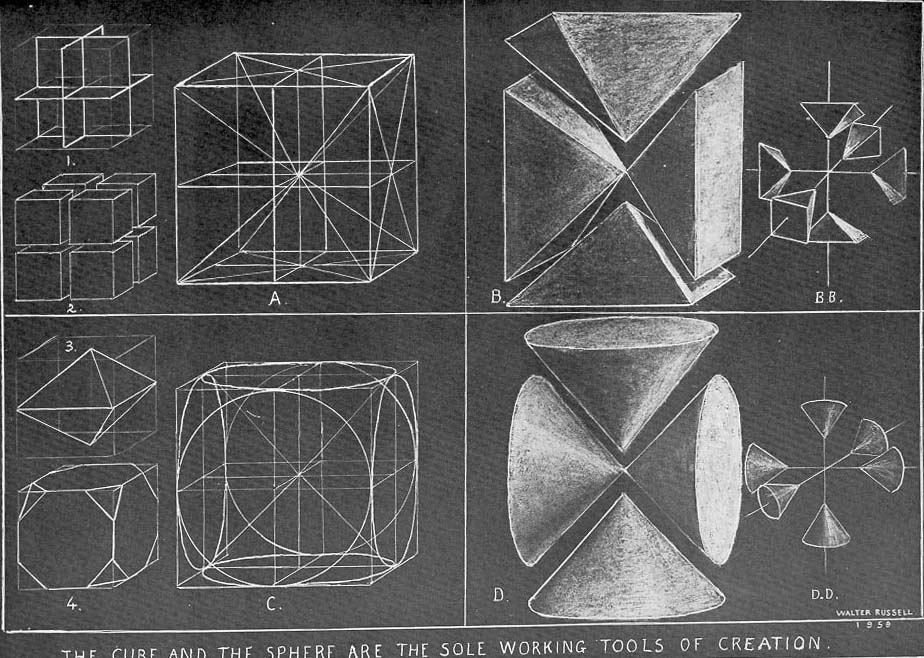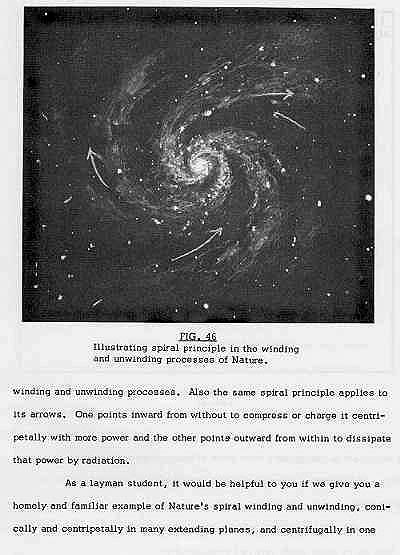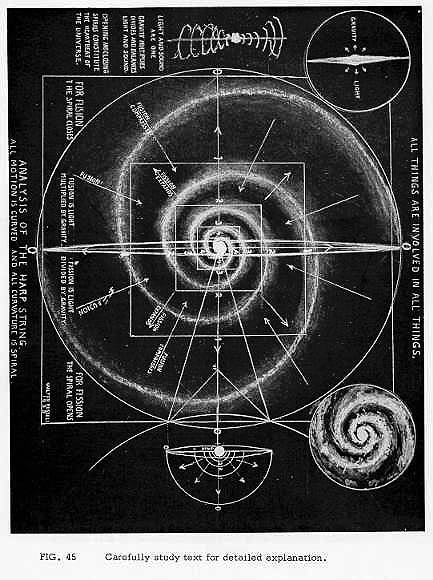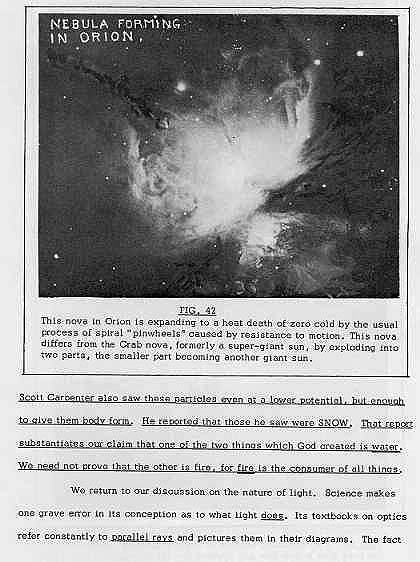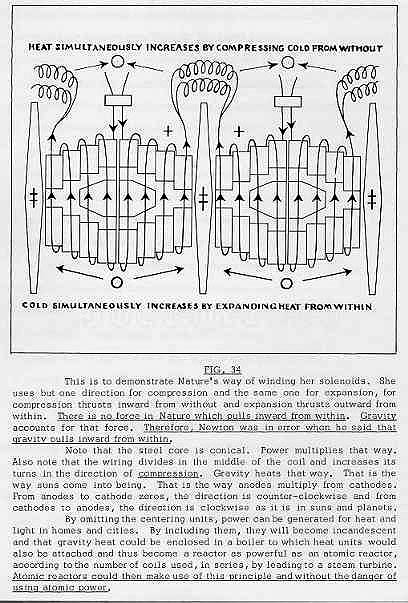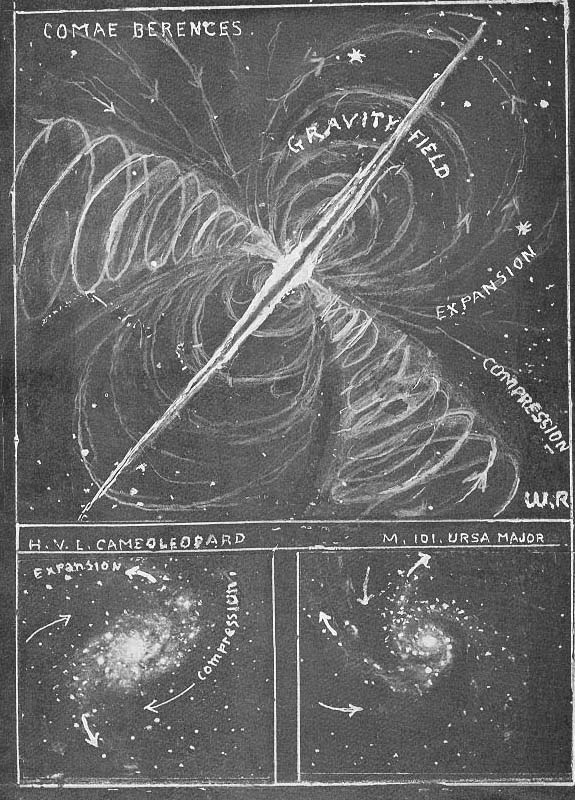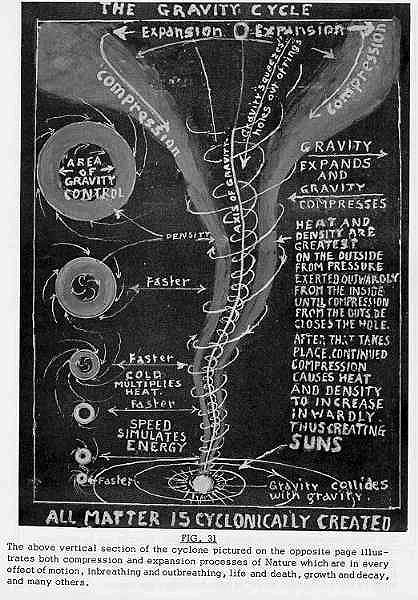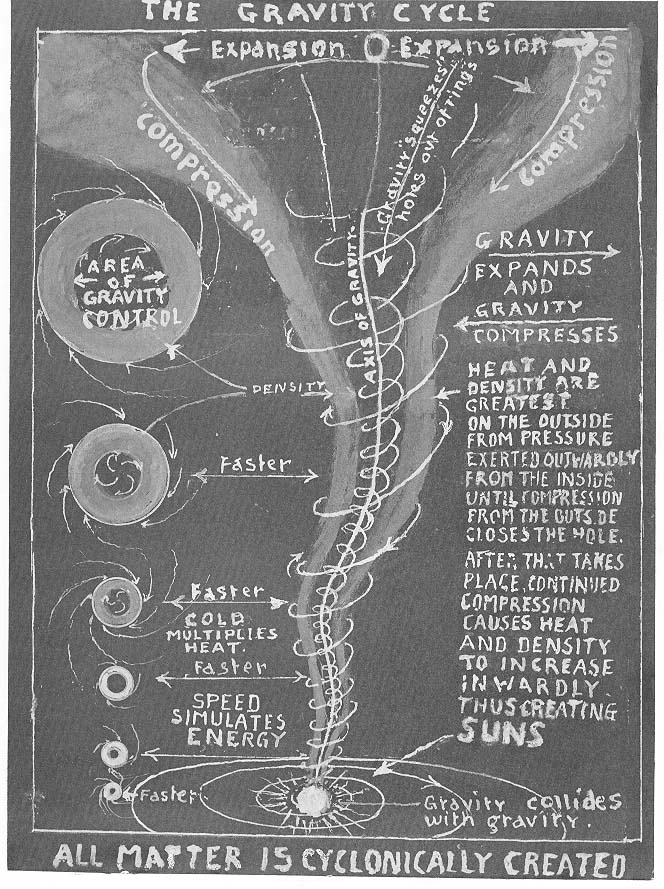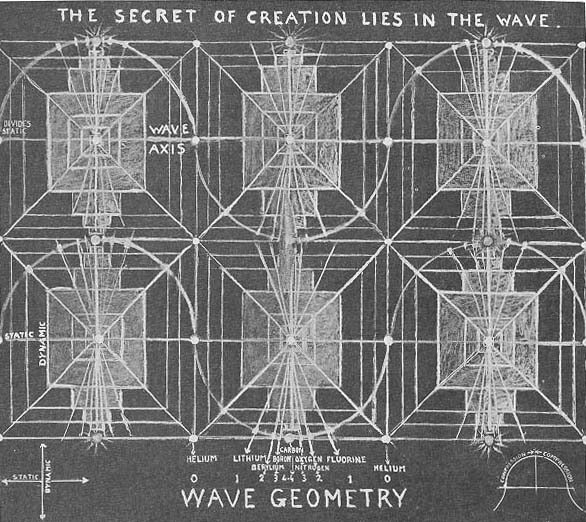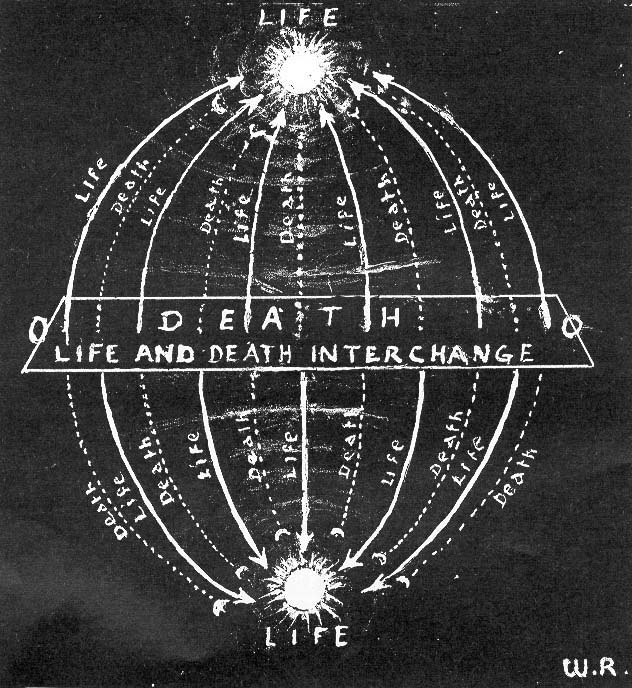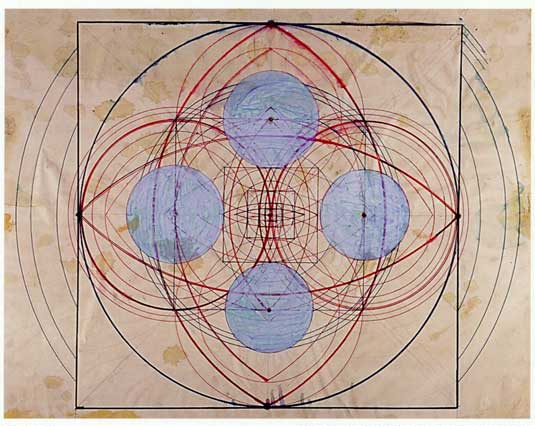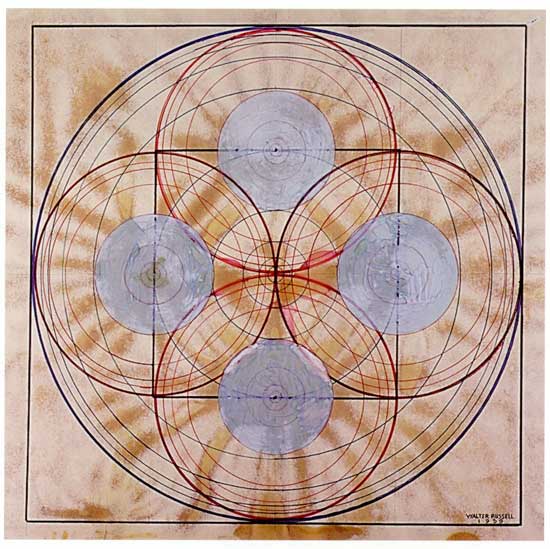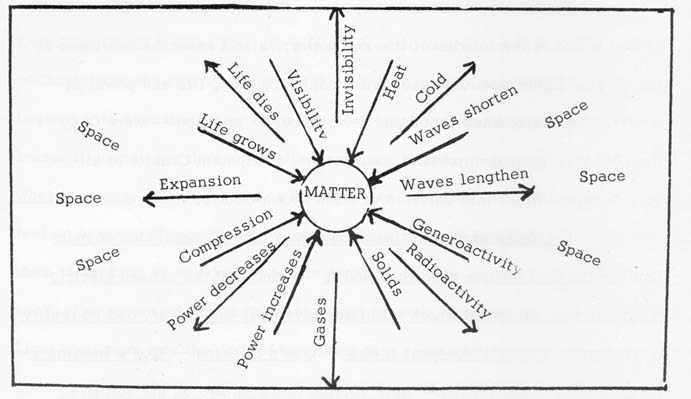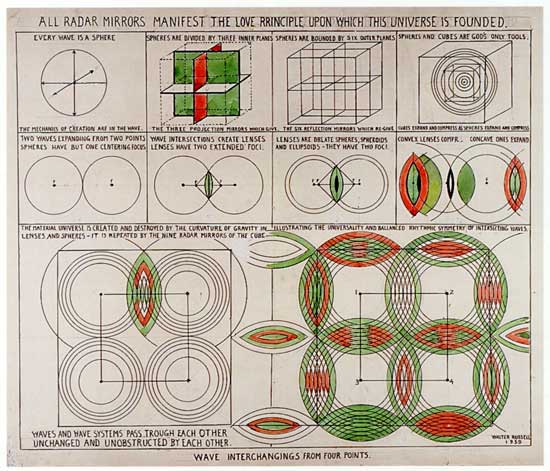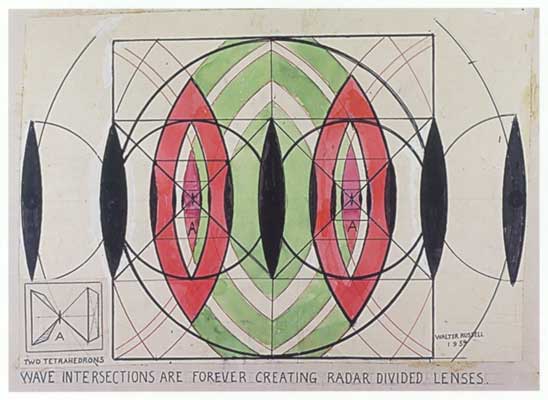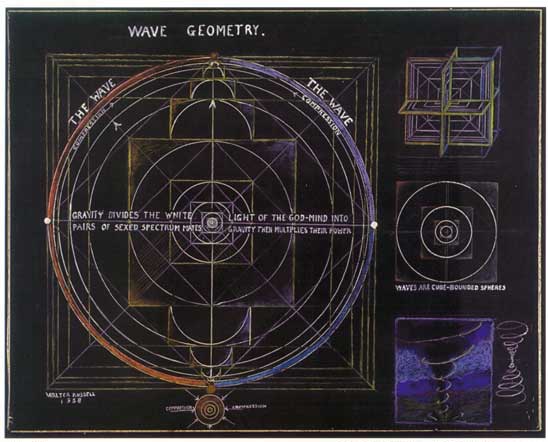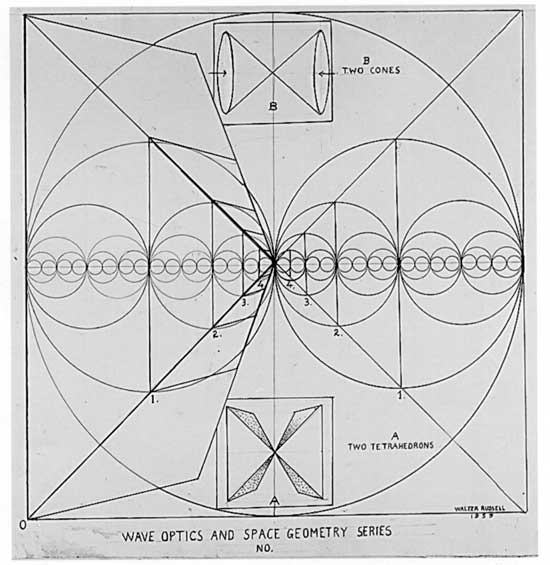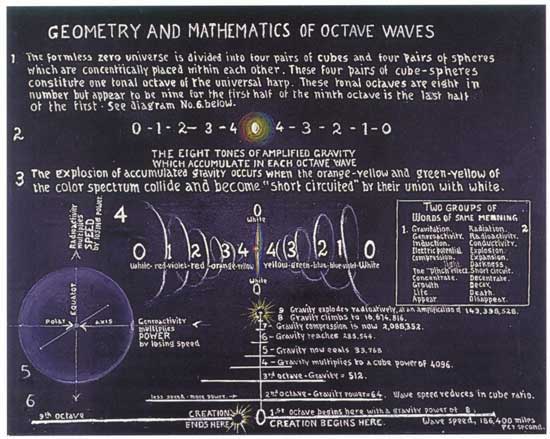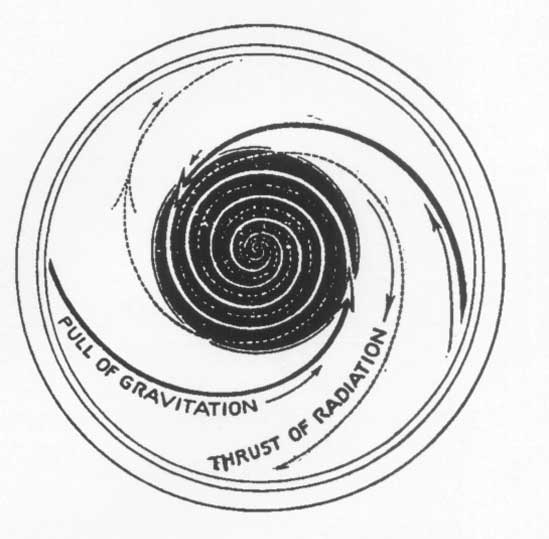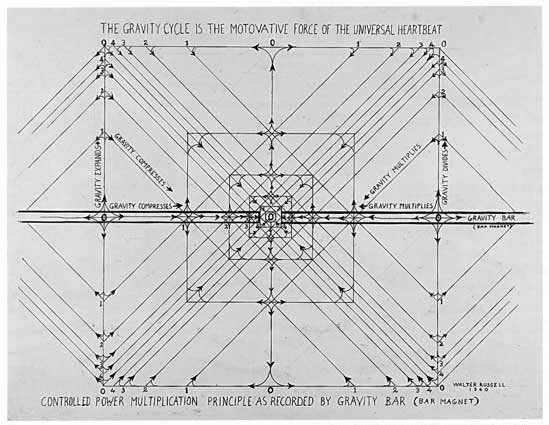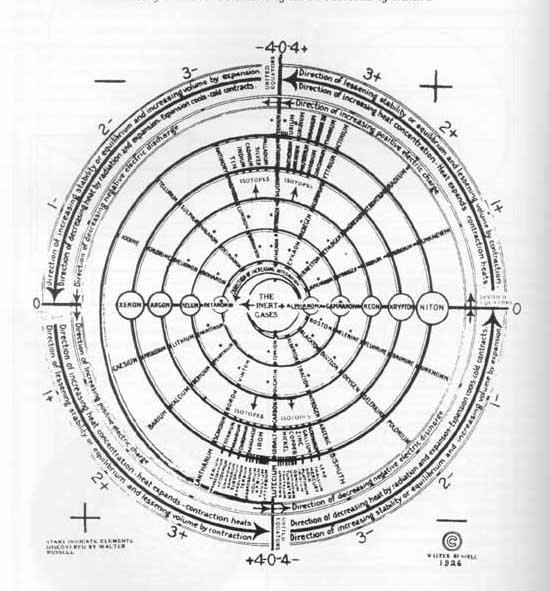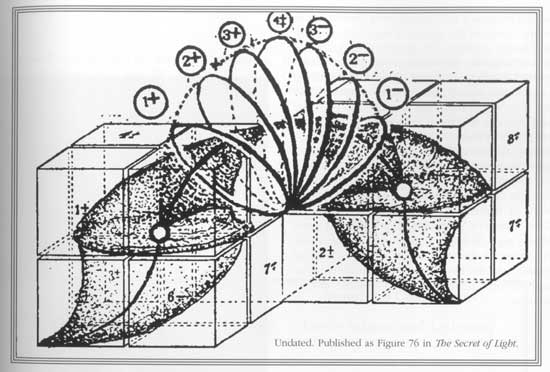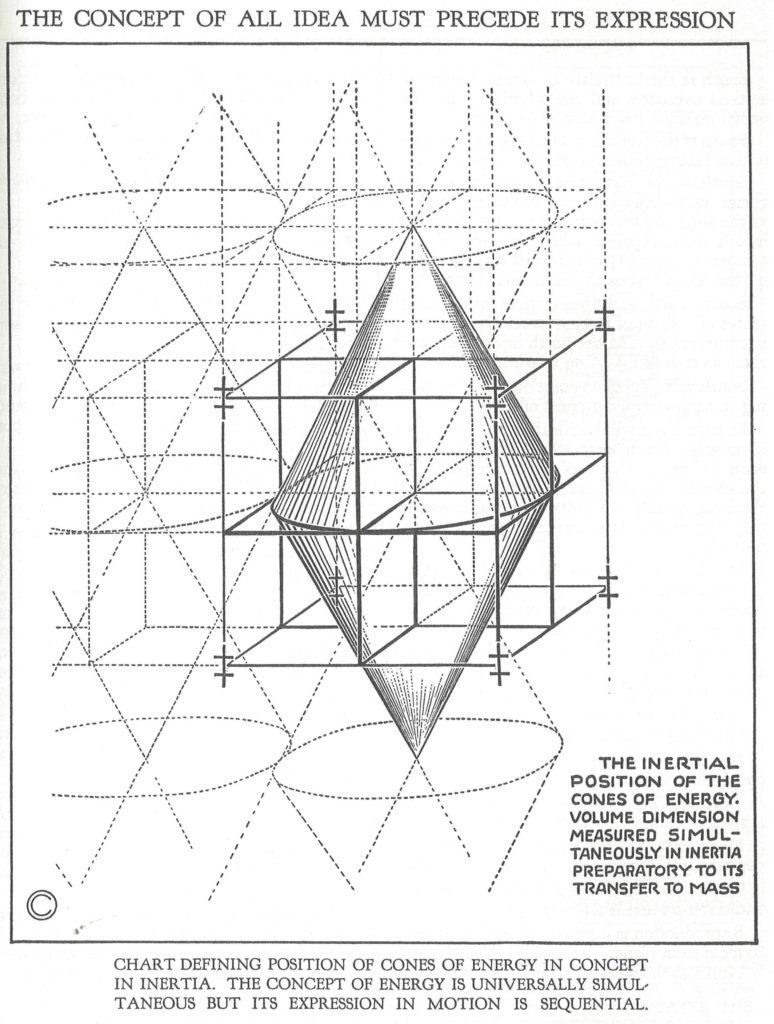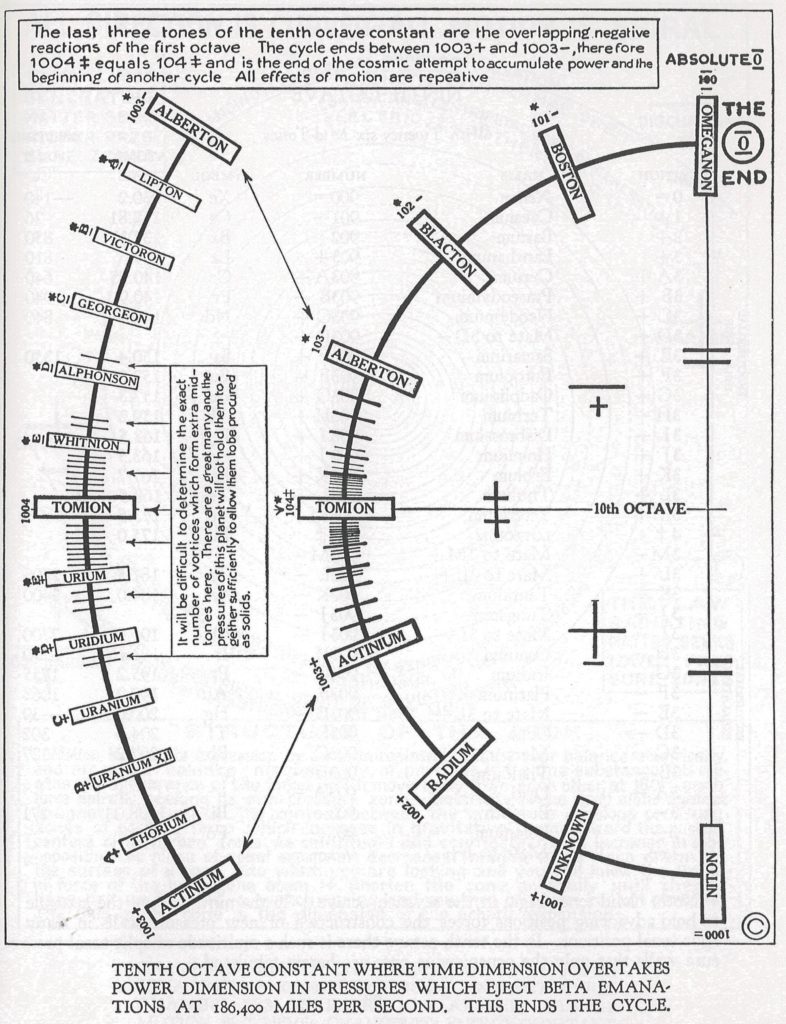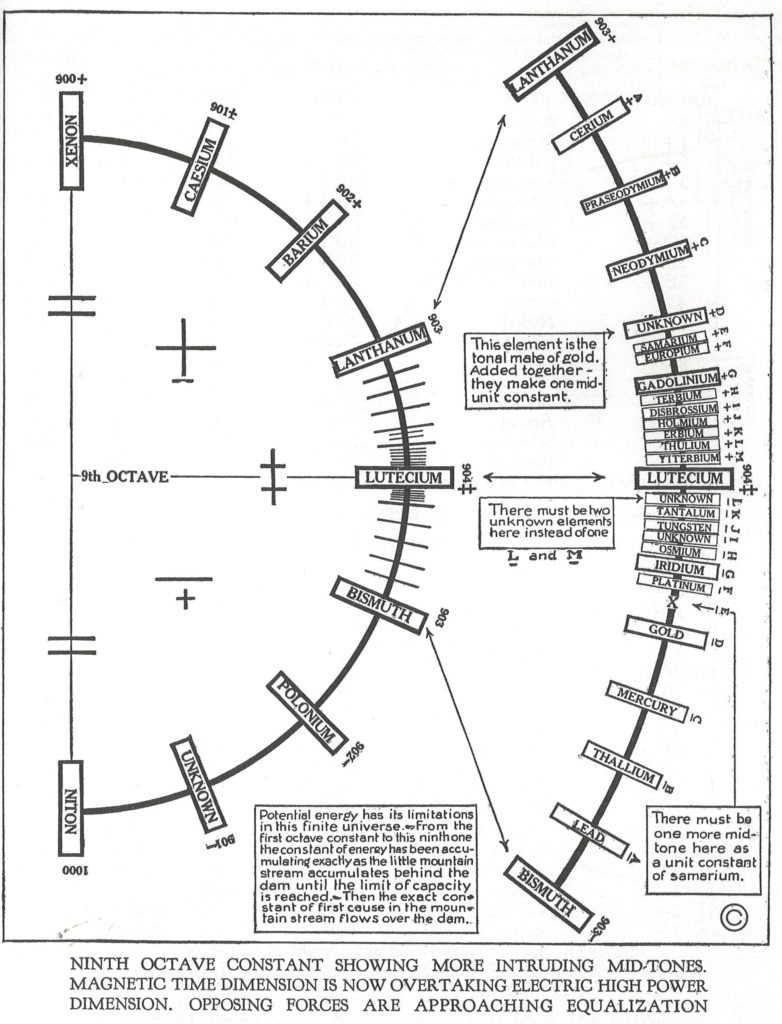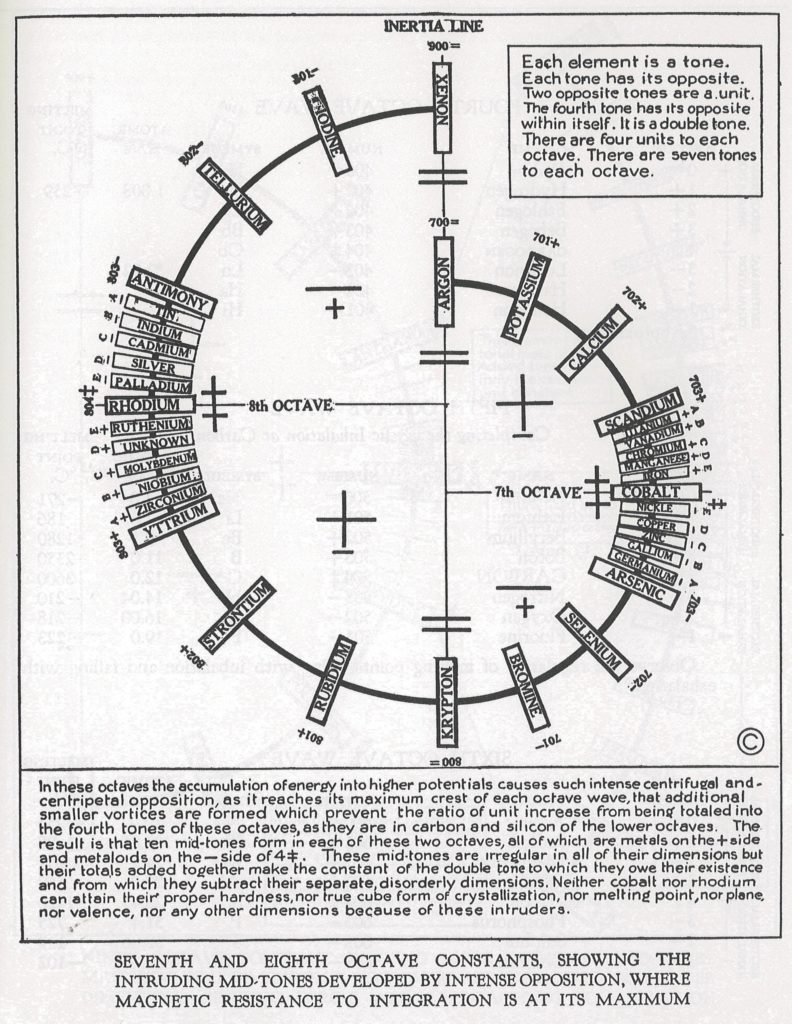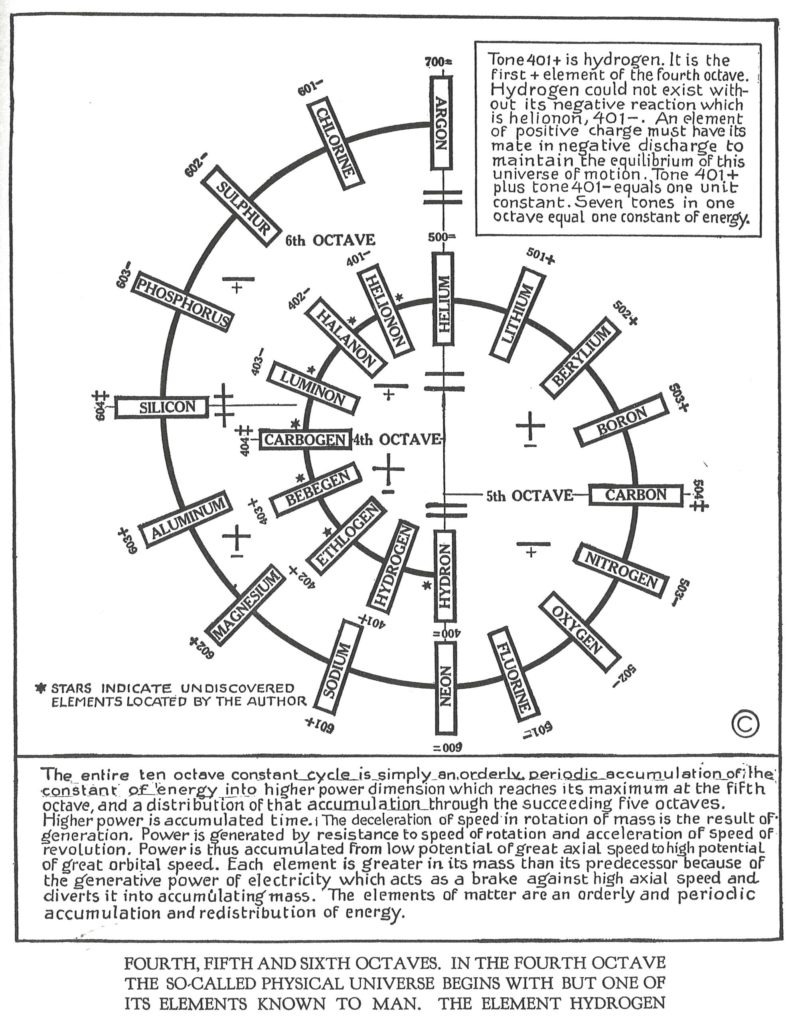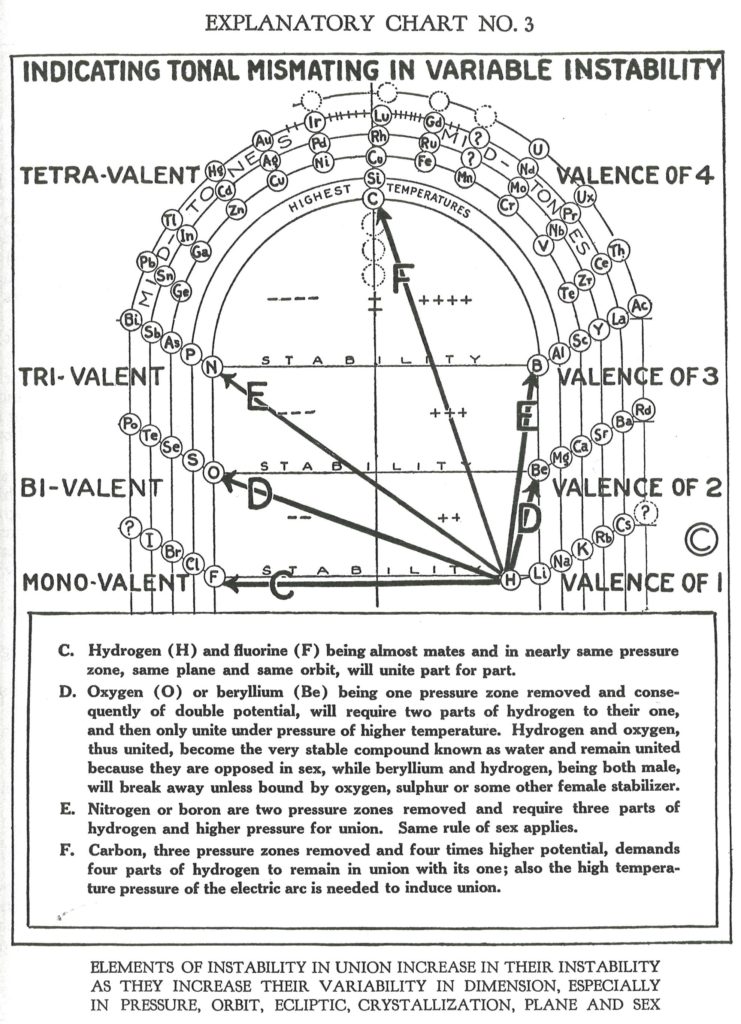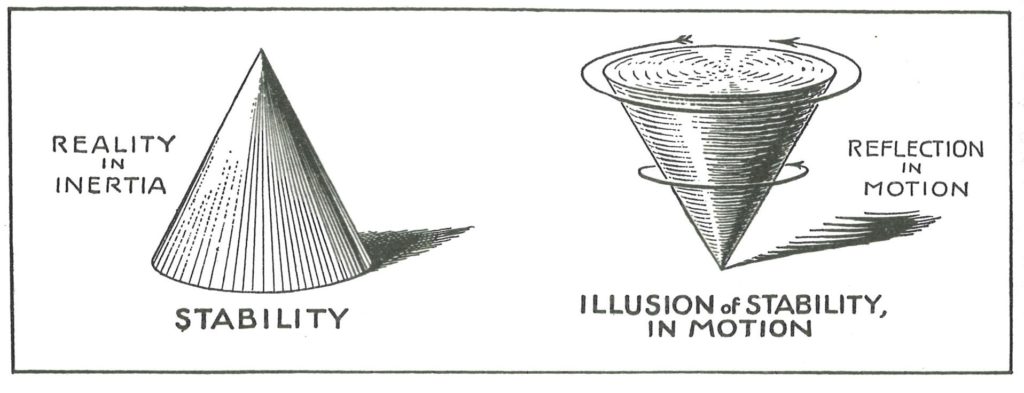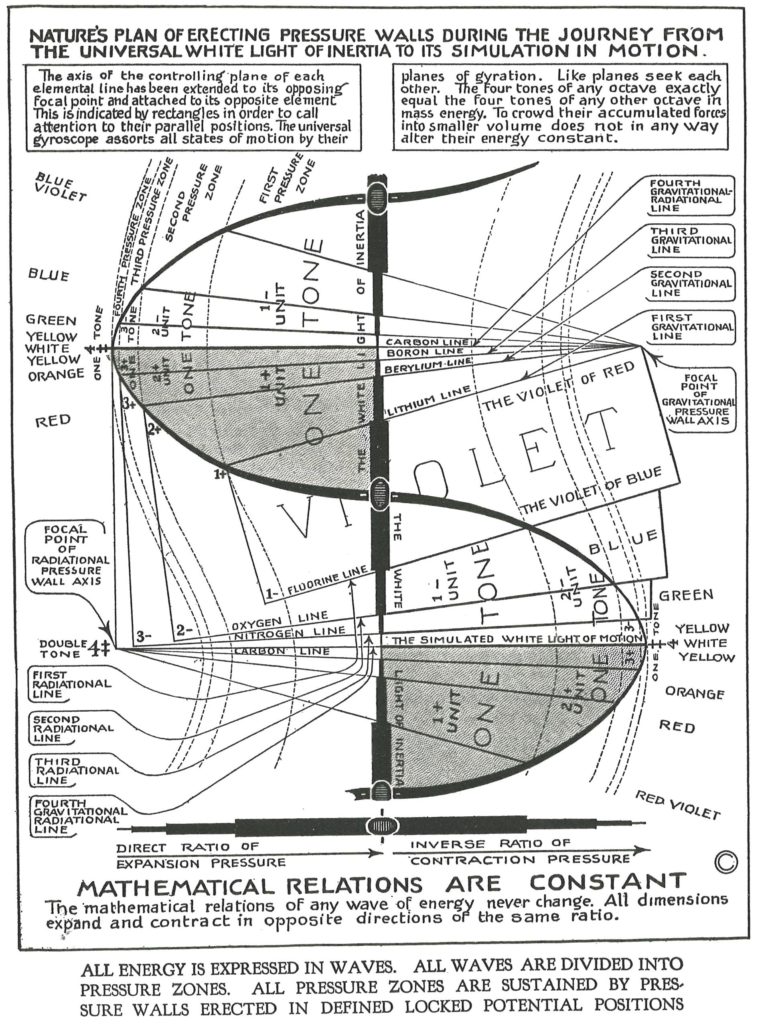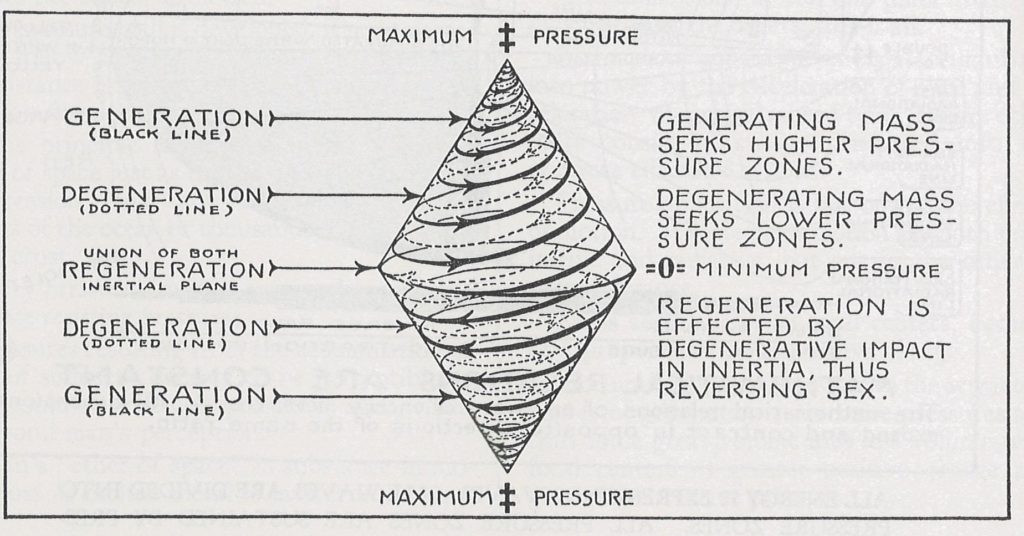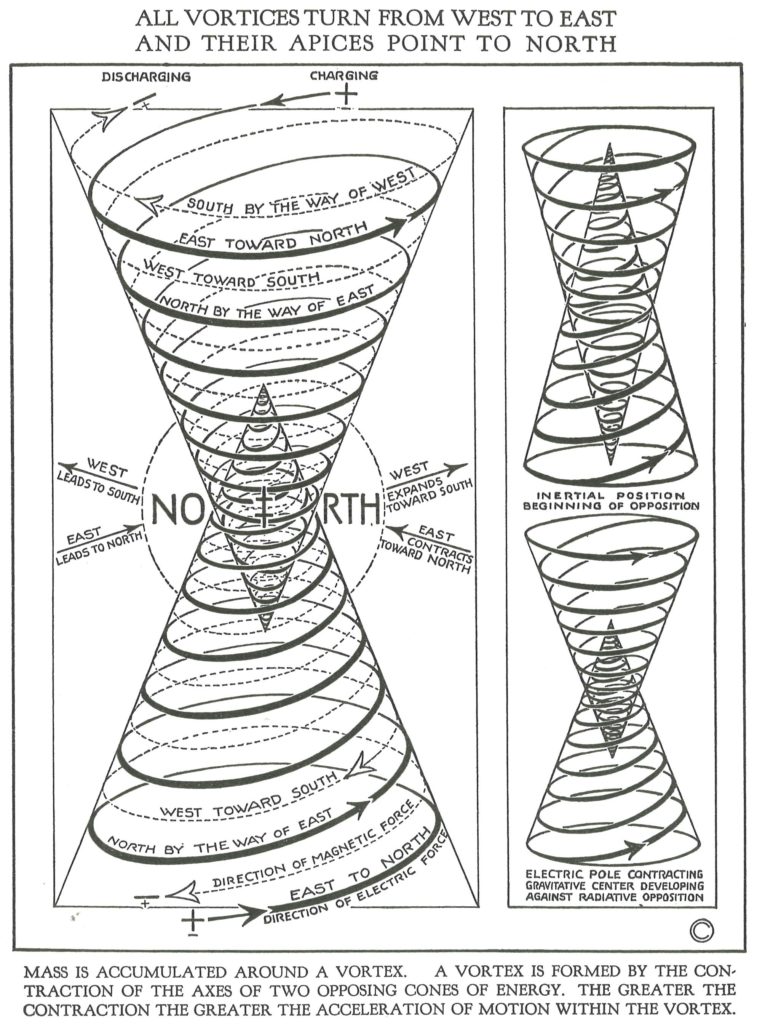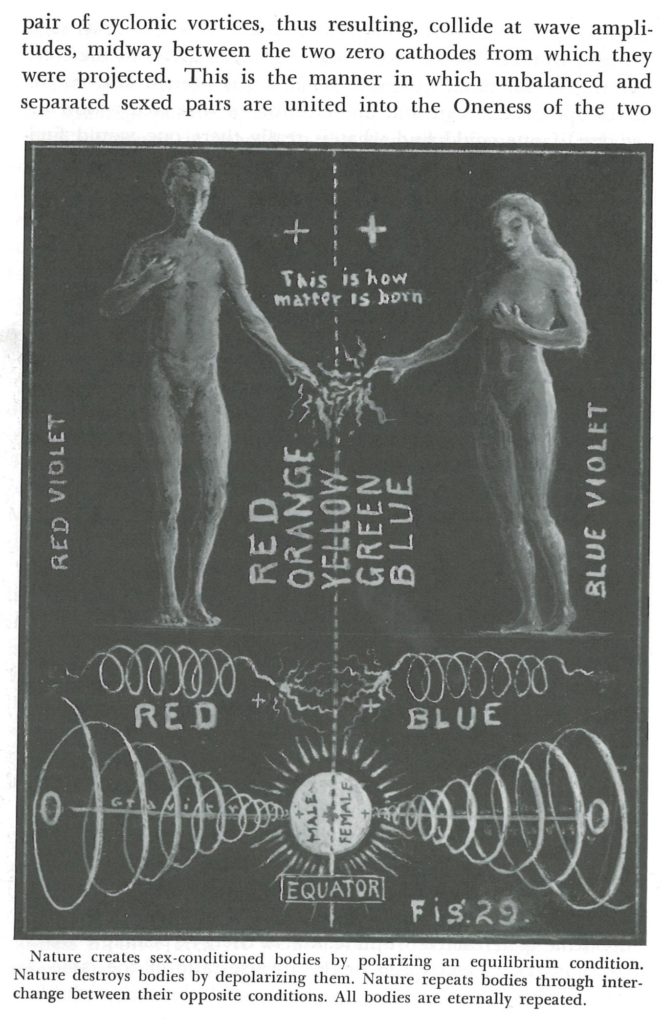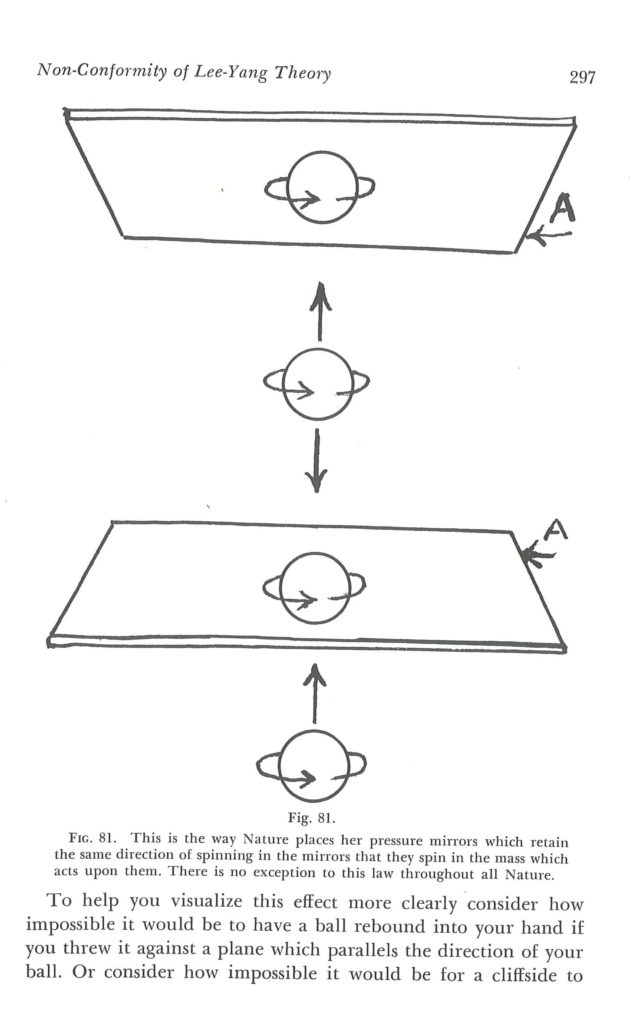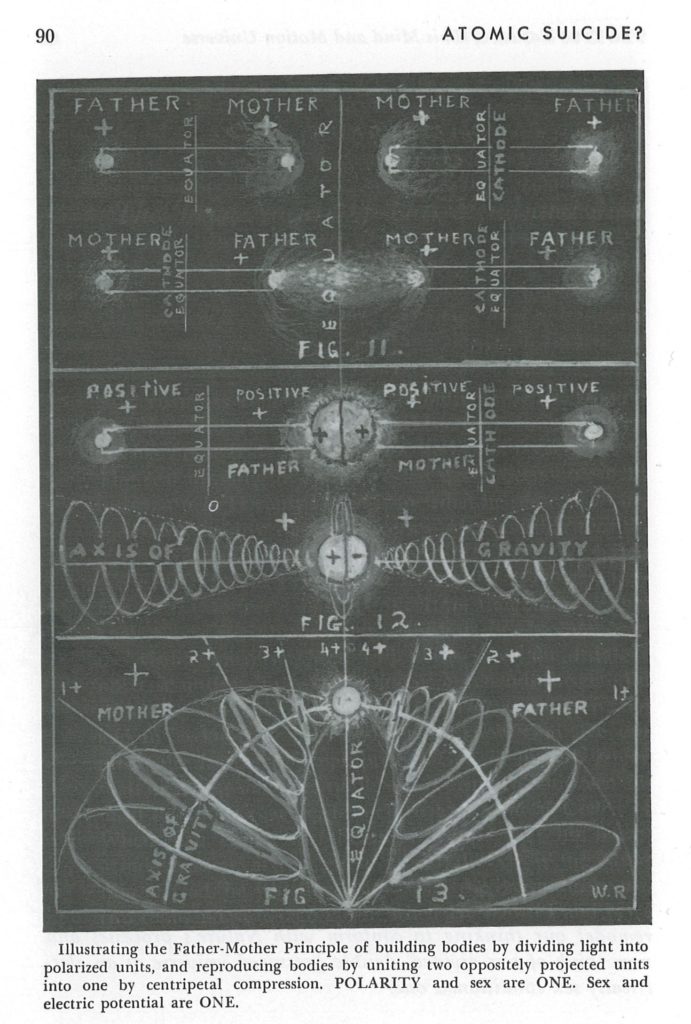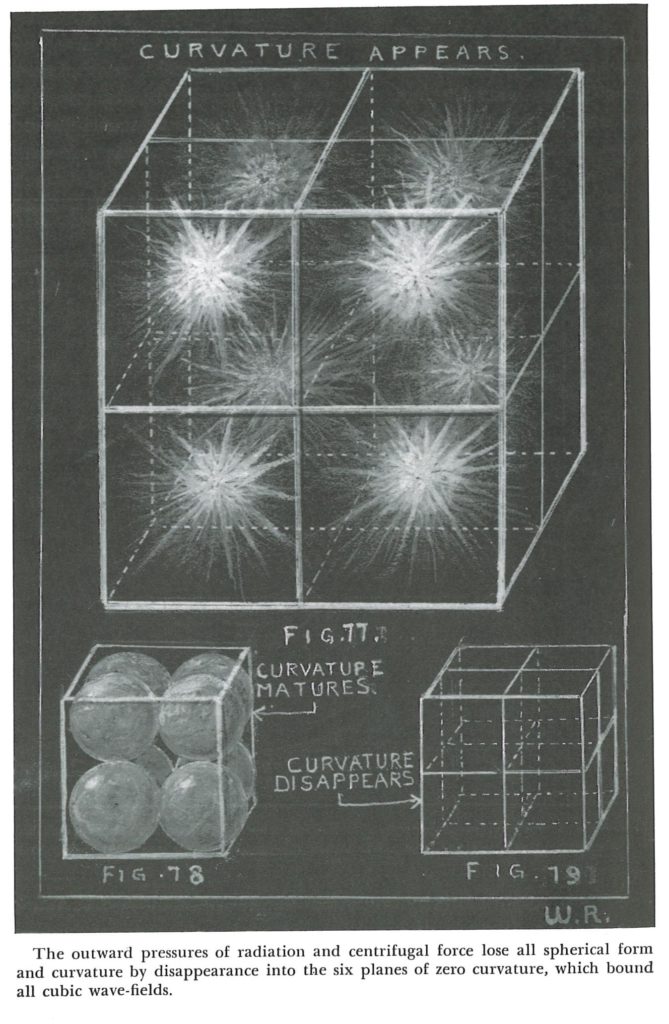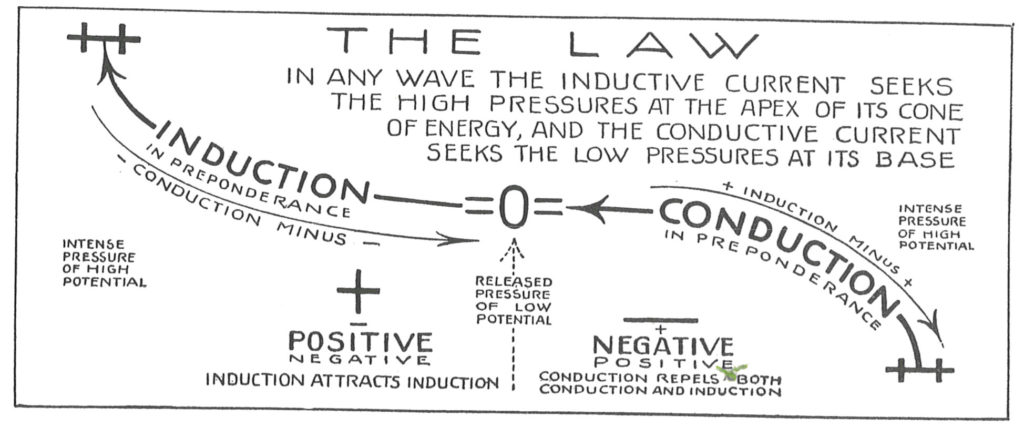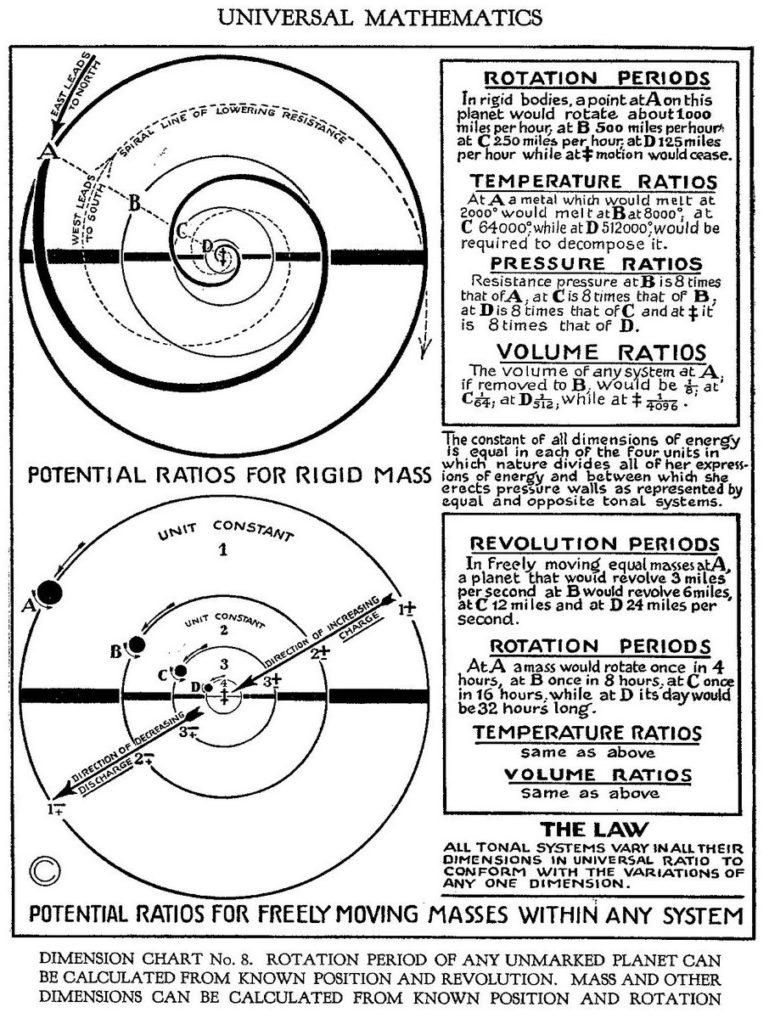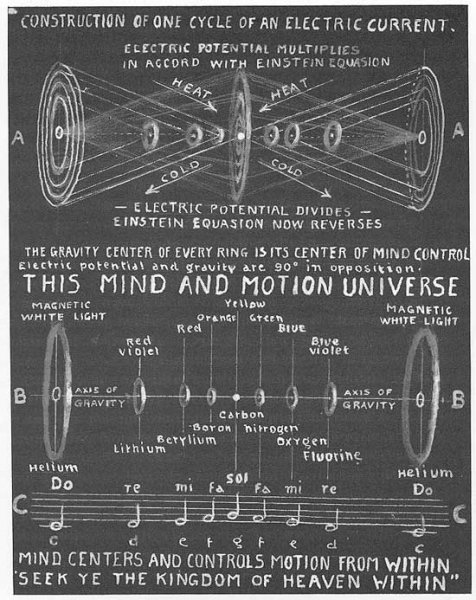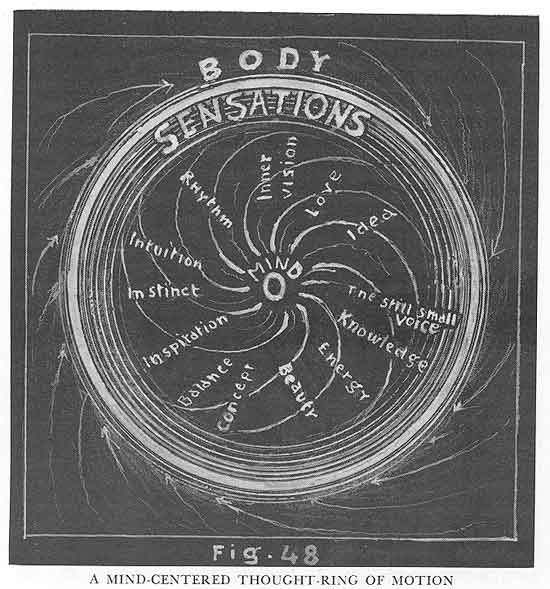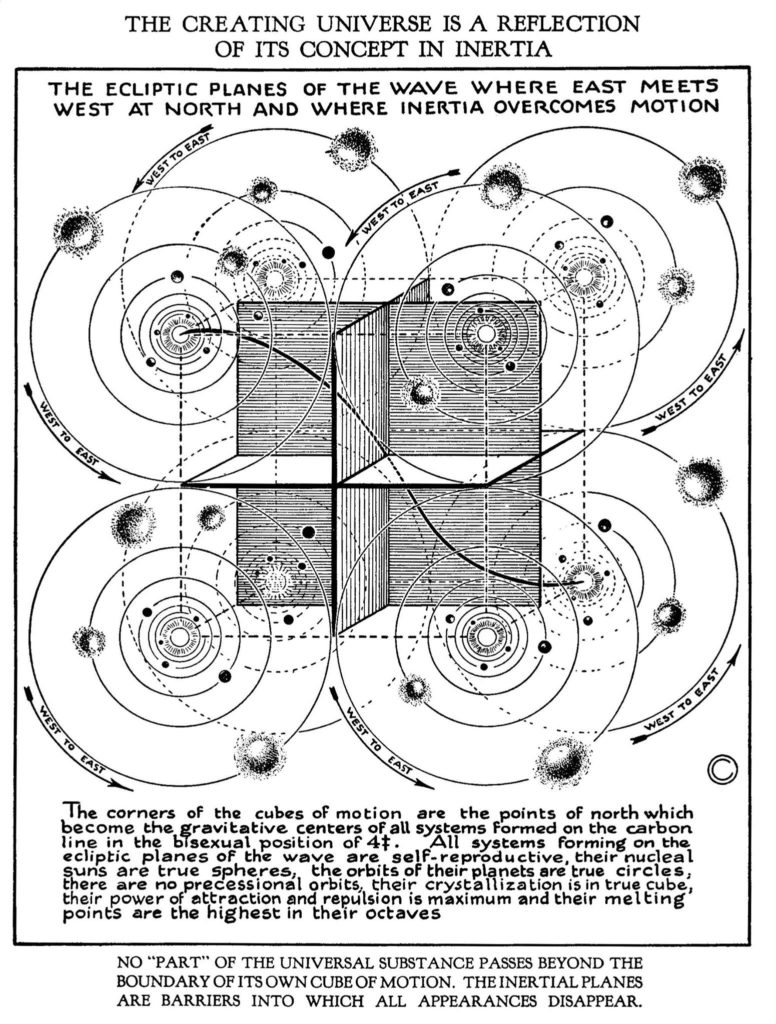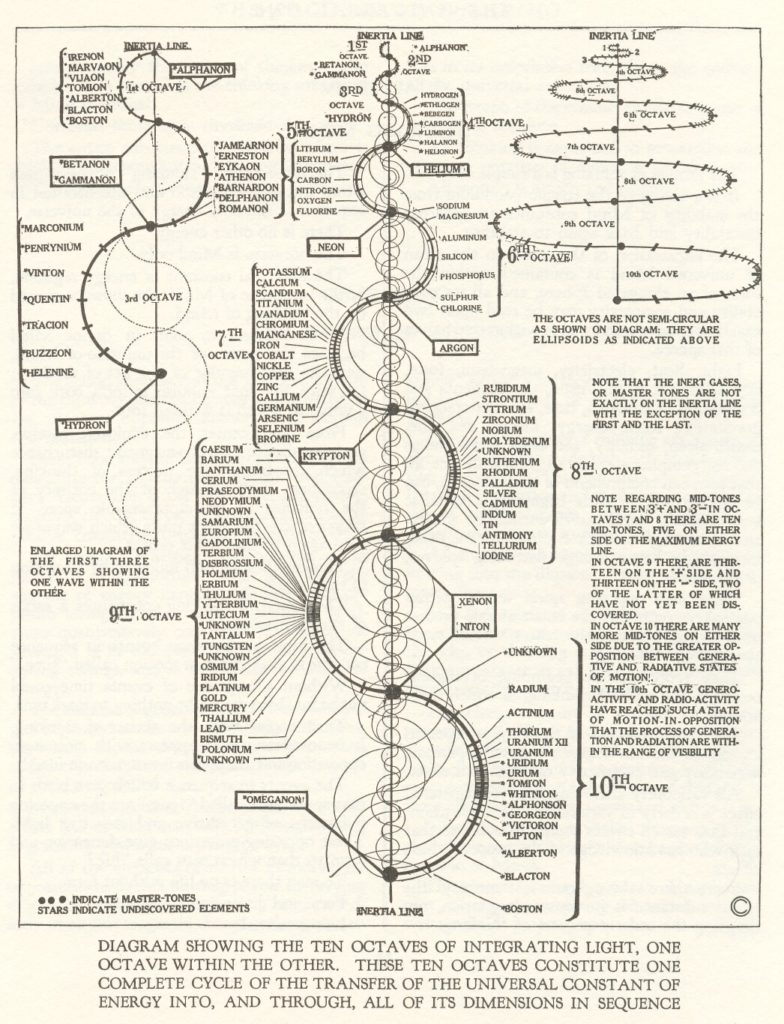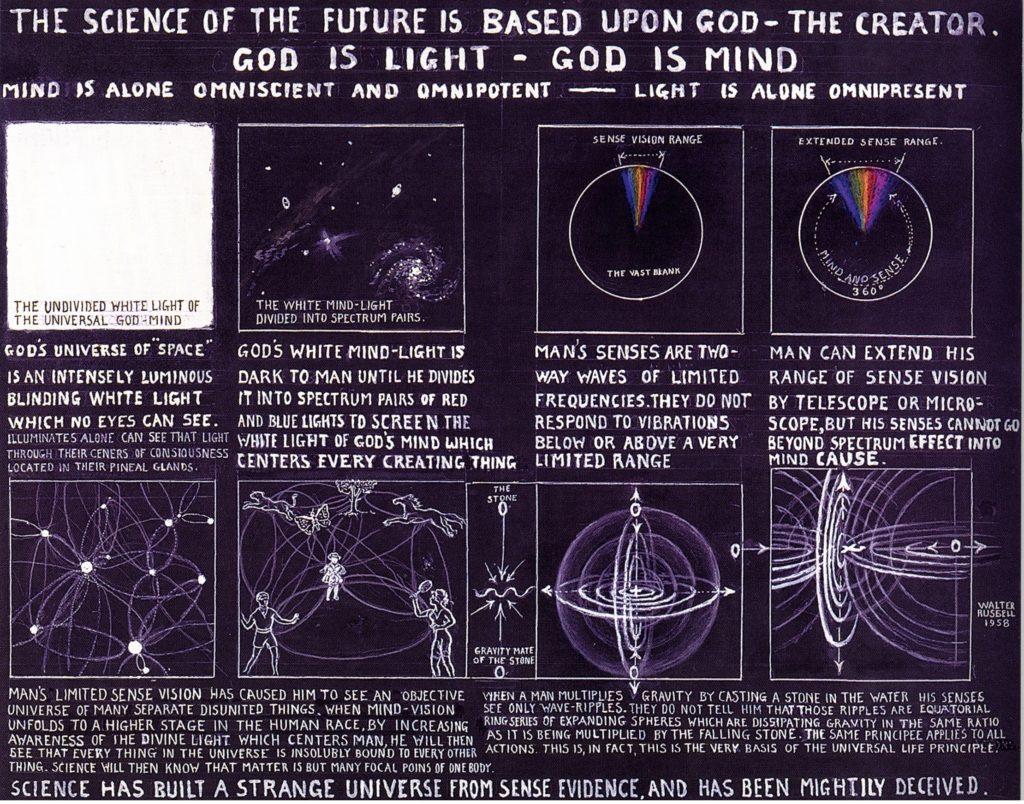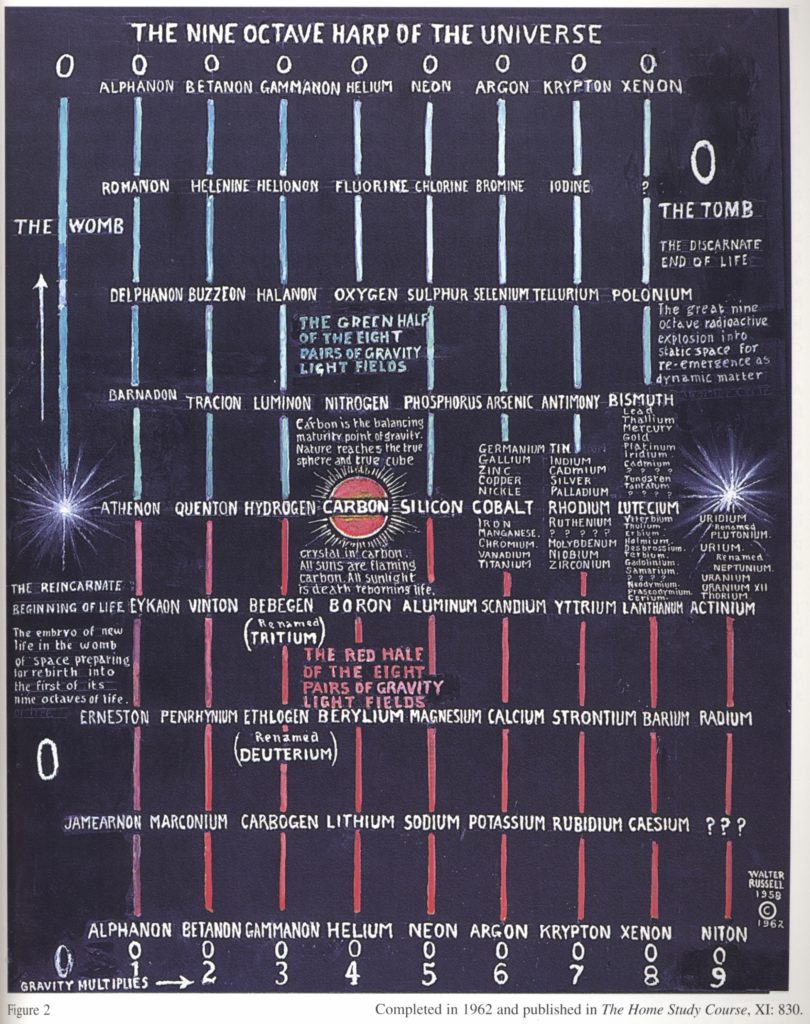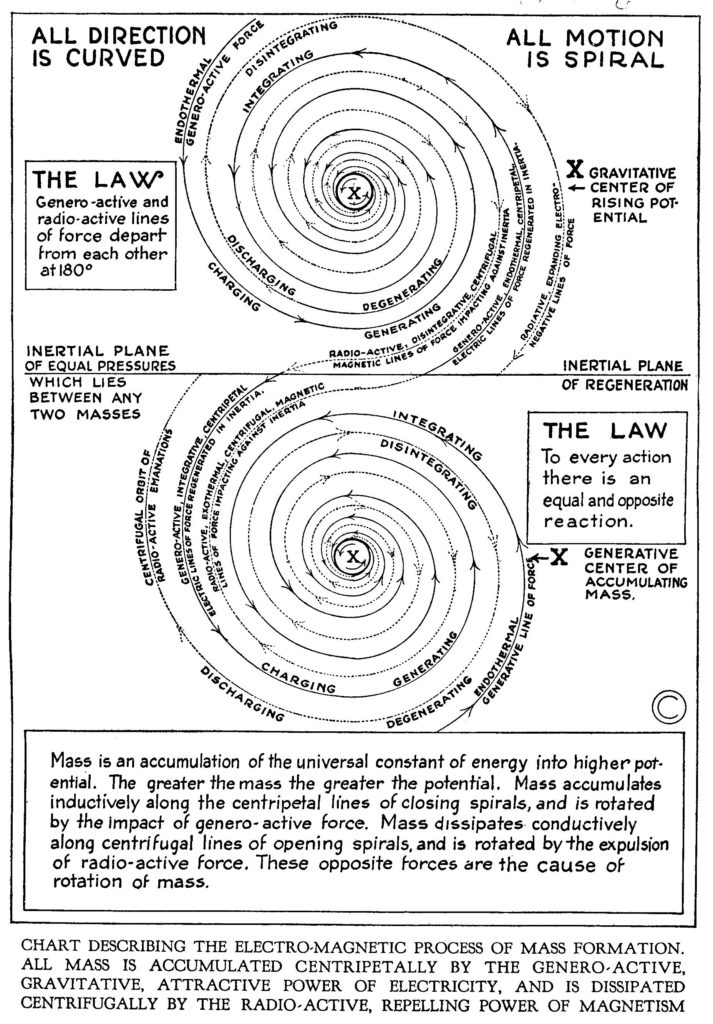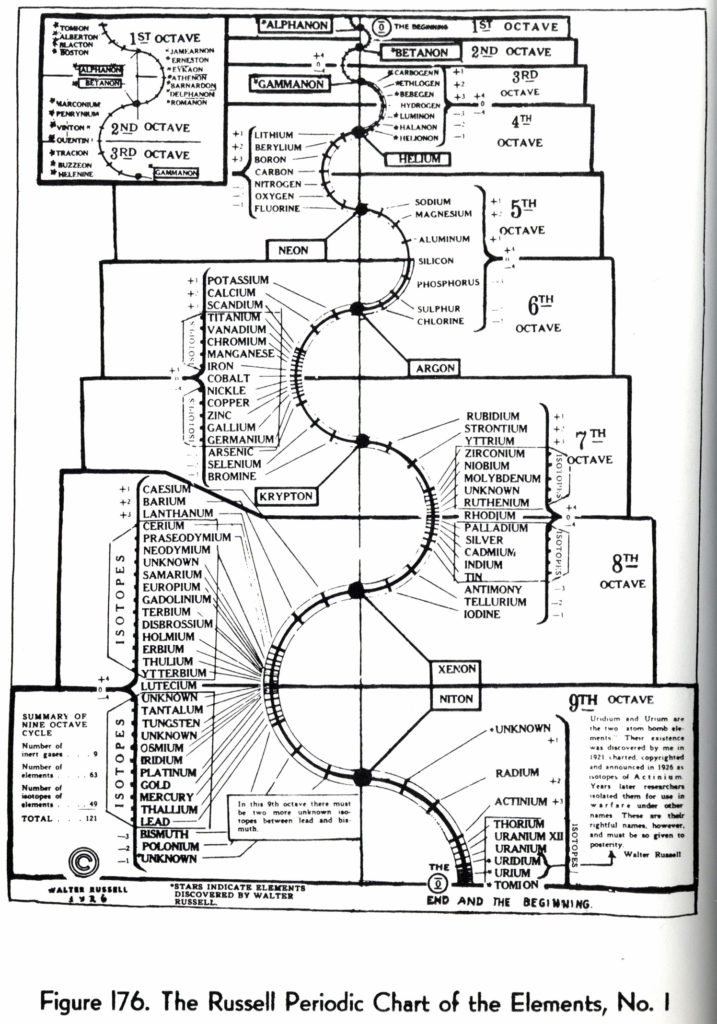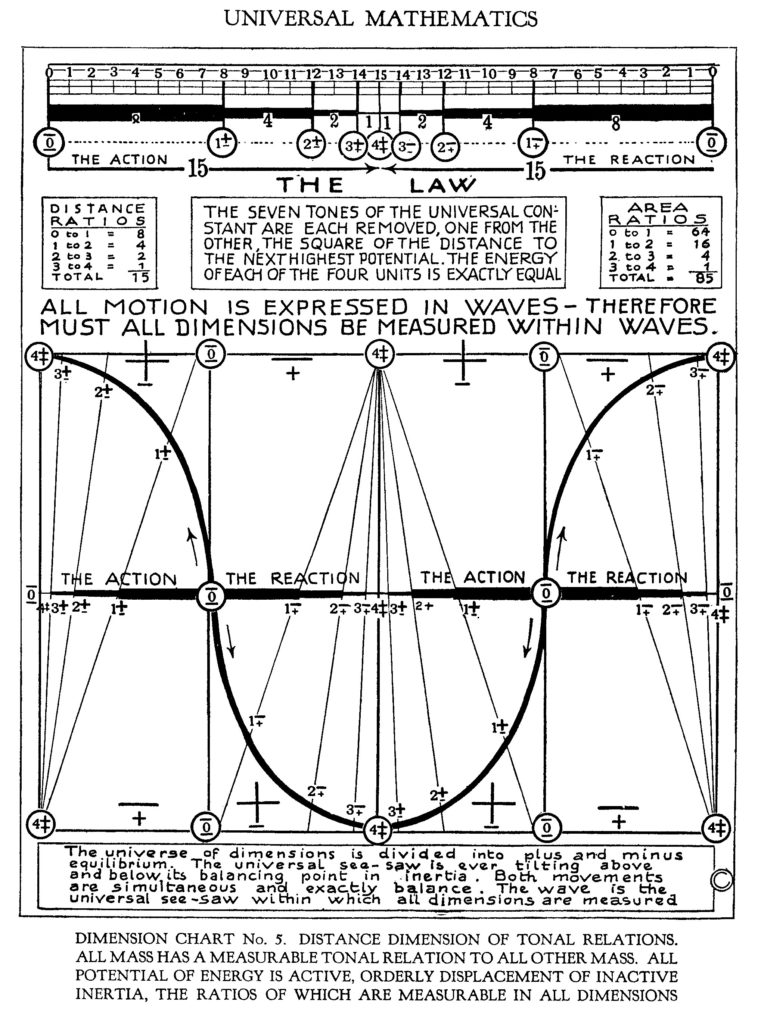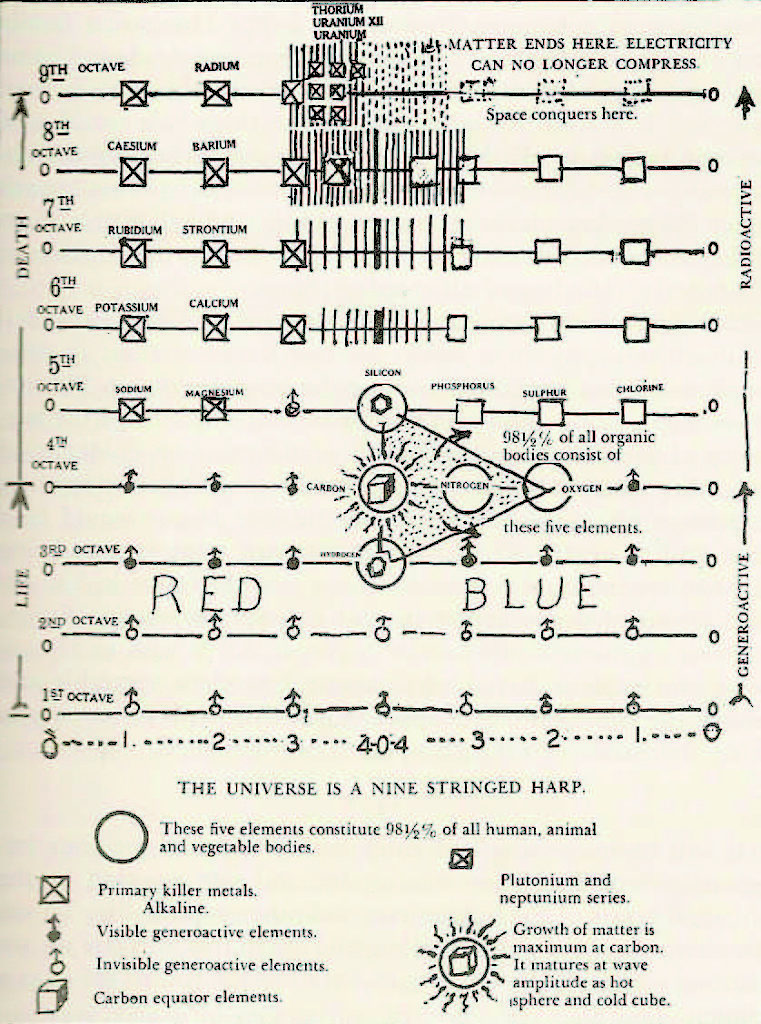PDF Download
1 Walter Russell THE UNIVERSAL ONE_compressed.pdf (9.6 MB)
The Universal One – A Comprehensive Overview
Introduction
Walter Russell’s The Universal One is a monumental work blending science, philosophy, and metaphysics, first published in 1927. Russell presents an alternative cosmogony, arguing that all matter, energy, and consciousness originate from a singular, intelligent source—what he calls Universal Mind. His work challenges traditional scientific theories by suggesting that the entire universe operates through rhythmic cycles of motion, oscillating between integration and disintegration.
The book aims to provide an exact science of the One visible and invisible universe, emphasizing light, energy, and the divine structure of reality. Russell integrates physics, cosmology, and spiritual insight to articulate a vision of a universe governed by laws of balance, resonance, and reciprocal motion.
But first, enjoy the diagram collection!
Key Themes and Scientific Foundations
1. The One Universal Substance and Divine Mind
- Russell asserts that there is only one universal substance, which is Mind itself.
- This universal substance is light—a fundamental, living, and thinking force that forms the basis of all reality.
- Matter, energy, and consciousness are not separate phenomena, but expressions of the same universal intelligence.
- The universe is a finite system, defined by harmonic cycles rather than an infinite void.
Scientific Explanation:
- Russell’s physics is based on vibrational frequencies and wave motion, rather than static particles.
- He proposes that all elements and forces arise from rhythmic wave interference, forming the periodic table as a structured, evolving system of light manifestations.
- Unlike traditional physics, which separates matter and energy, Russell sees both as phases of a single, continuous force.
2. The Nature of Light and Matter
- Russell describes light as the fundamental medium of existence, a concept that aligns with ether-based theories.
- He distinguishes between two states of light:
- Polarized light: the manifested world of matter and form.
- Depolarized light: the unmanifested, potential energy in equilibrium.
- Matter is crystallized light, forming when waves of potential energy interact in a structured manner.
Scientific Explanation:
- Russell argues that matter is merely a denser state of electromagnetic radiation.
- Atoms are whirling vortices of light energy, shaped by rhythmic wave functions.
- His vision of atomic structure resembles modern quantum field theories, where particles emerge from underlying energy fields.
3. The Cyclic Nature of Creation and Dissolution
- Russell emphasizes that everything in the universe follows cycles of birth, growth, decay, and rebirth.
- This applies to atoms, planets, stars, and even human consciousness.
- He introduces the concept of generative (electric) and radiative (magnetic) forces, which act as the yin and yang of the cosmos.
- The life cycle of matter follows a spiral progression, evolving through stages of increasing complexity before returning to the source.
Scientific Explanation:
- Gravitation and radiation are reciprocal forces, with one building form and the other dissolving it.
- Russell’s wave mechanics propose that energy cycles through alternating compressive and expansive phases, much like the tides or the breath of life.
- The entire periodic table is structured around these rhythmic cycles, with elements evolving from lighter to heavier states before disintegration.
4. The Universal Mathematics and Ratios of Creation
- Russell argues that the fundamental structure of the universe is mathematical.
- He introduces the idea that proportional balance governs all cosmic phenomena.
- Geometric forms such as spirals, cubes, and spheres encode the mathematical relationships of wave interactions.
Scientific Explanation:
- Russell’s wave mechanics align with the golden ratio and Fibonacci sequences.
- He believes that electromagnetic forces distribute energy in self-similar, fractal patterns, much like those seen in nature.
- This harmonic structuring can be seen in planetary orbits, atomic interactions, and even human biology.
5. The Relationship Between Consciousness and Physics
- Russell proposes that consciousness and matter are not separate but different states of the same energy.
- Human awareness operates within the same rhythmic laws that govern physical phenomena.
- Higher states of consciousness allow individuals to perceive and even manipulate these energy fields.
- Spiritual enlightenment is a form of harmonic resonance with the universal mind.
Scientific Explanation:
- Modern studies in quantum mechanics suggest that observation affects physical systems, echoing Russell’s claim that mind and matter are intrinsically linked.
- The brain and heart operate on electromagnetic principles, supporting the idea that consciousness interacts with physical reality through wave coherence.
Applications of Russell’s Theories
1. Alternative Energy and Transmutation
- Russell suggests that understanding the wave nature of matter could lead to new energy sources.
- His models of transmutation describe how elements can be artificially evolved or deconstructed.
- These principles could be applied to clean energy solutions beyond traditional combustion or nuclear fission.
2. Architectural and Environmental Design
- Russell’s insights into geometry and resonance could influence sustainable architecture.
- Structures designed with harmonic wave principles could enhance human health and energy balance.
- Sacred geometries found in ancient civilizations might have been designed to harness and amplify subtle energy fields.
3. Consciousness Development and Human Potential
- Russell’s work suggests that by aligning one’s thoughts with cosmic rhythms, higher states of creativity, intuition, and intelligence can be unlocked.
- Meditation and deep contemplation align brainwaves with natural electromagnetic harmonics, leading to greater clarity and insight.
Conclusion: A New Cosmological Paradigm
Walter Russell’s The Universal One presents a radical yet profound reinterpretation of reality, blending physics, metaphysics, and spirituality into a unified framework. His wave-based universe offers a compelling alternative to materialist science, suggesting that:
- Matter is structured light, cycling between states of integration and dissolution.
- Energy follows harmonic principles, shaping the evolution of elements, life, and consciousness.
- Consciousness is an integral part of the universe, capable of perceiving and influencing wave dynamics.
Russell’s work continues to inspire those seeking a deeper, holistic understanding of the cosmos, bridging the gap between science, philosophy, and divine intelligence.
Could this harmonic wave model be the missing key to a new scientific revolution?
